The Zimaboard 2 Single Board Server Review – The Best Yet?
In an increasingly saturated market of single-board computers and compact servers, the ZimaBoard 2 arrives with a clear goal: to offer an affordable, x86-powered, DIY-friendly alternative that bridges the gap between embedded systems and full-blown home servers. Developed by IceWhale, a brand that has already seen crowdfunding success with products like the original ZimaBoard, ZimaBlade, and ZimaCube, the ZimaBoard 2 aims to refine the company’s mission of delivering low-power, highly customizable devices for tinkerers, creators, and homelab enthusiasts. At its core, the ZimaBoard 2 is designed for users who want flexibility without complexity—whether that’s spinning up a lightweight virtualization platform, building a smart home hub, deploying a personal cloud, or running a local media server with minimal noise and energy consumption.
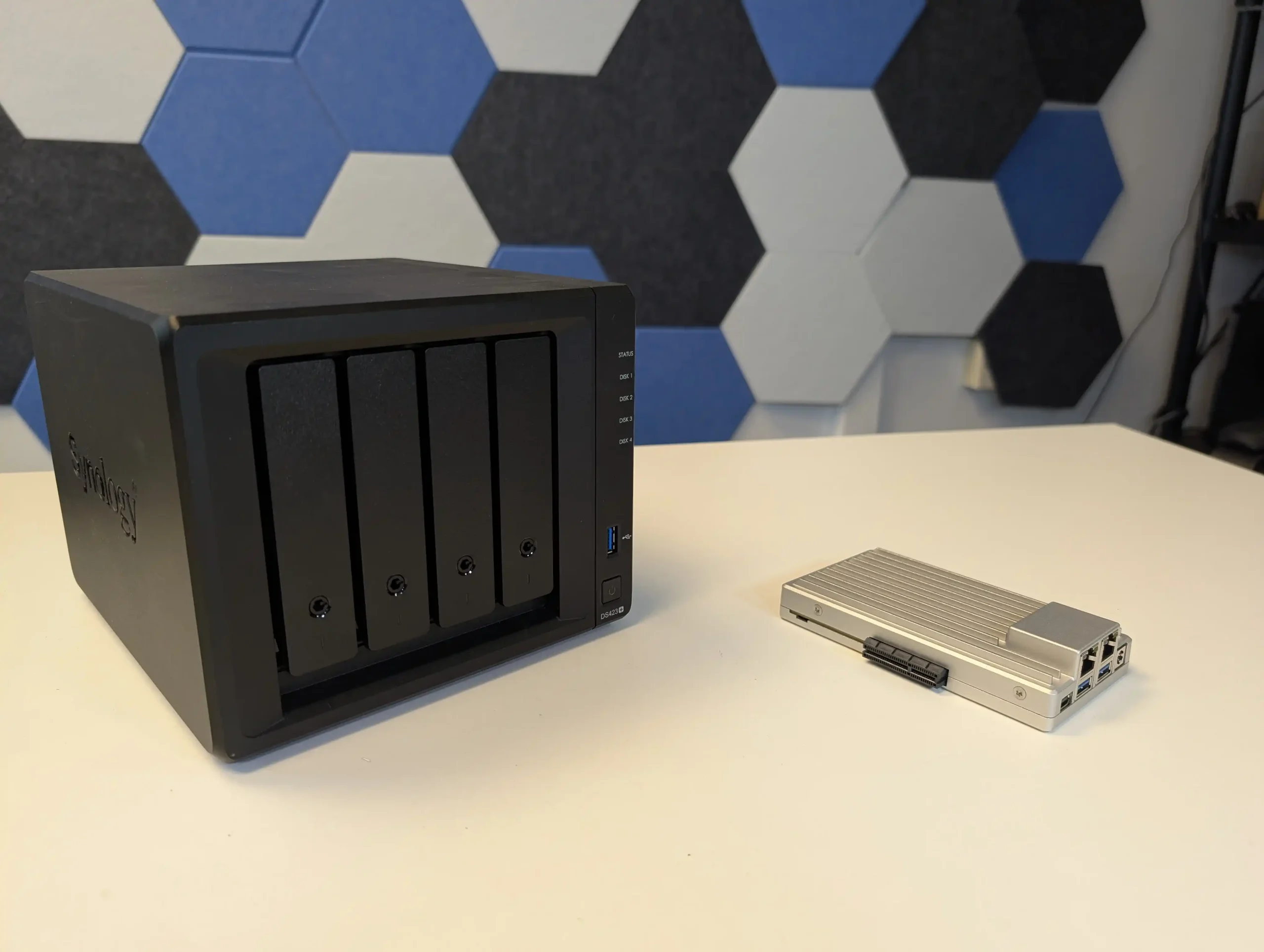
Unlike consumer-grade NAS systems or ARM-based boards, ZimaBoard 2 taps into the x86 ecosystem, offering broader OS compatibility and performance benefits while maintaining a compact, passively cooled footprint. This review explores the hardware, thermal and network performance, and software environment of the ZimaBoard 2, evaluating where it fits in the broader landscape of edge computing and personal infrastructure. As with previous IceWhale launches, this unit is being released initially through crowdfunding—a factor that calls for cautious optimism. Still, with a track record of fulfilling past campaigns, IceWhale appears confident in ZimaBoard 2’s readiness. Whether that confidence is justified, and whether the board truly earns its place in a crowded DIY server landscape, is what we’ll determine over the course of this review.
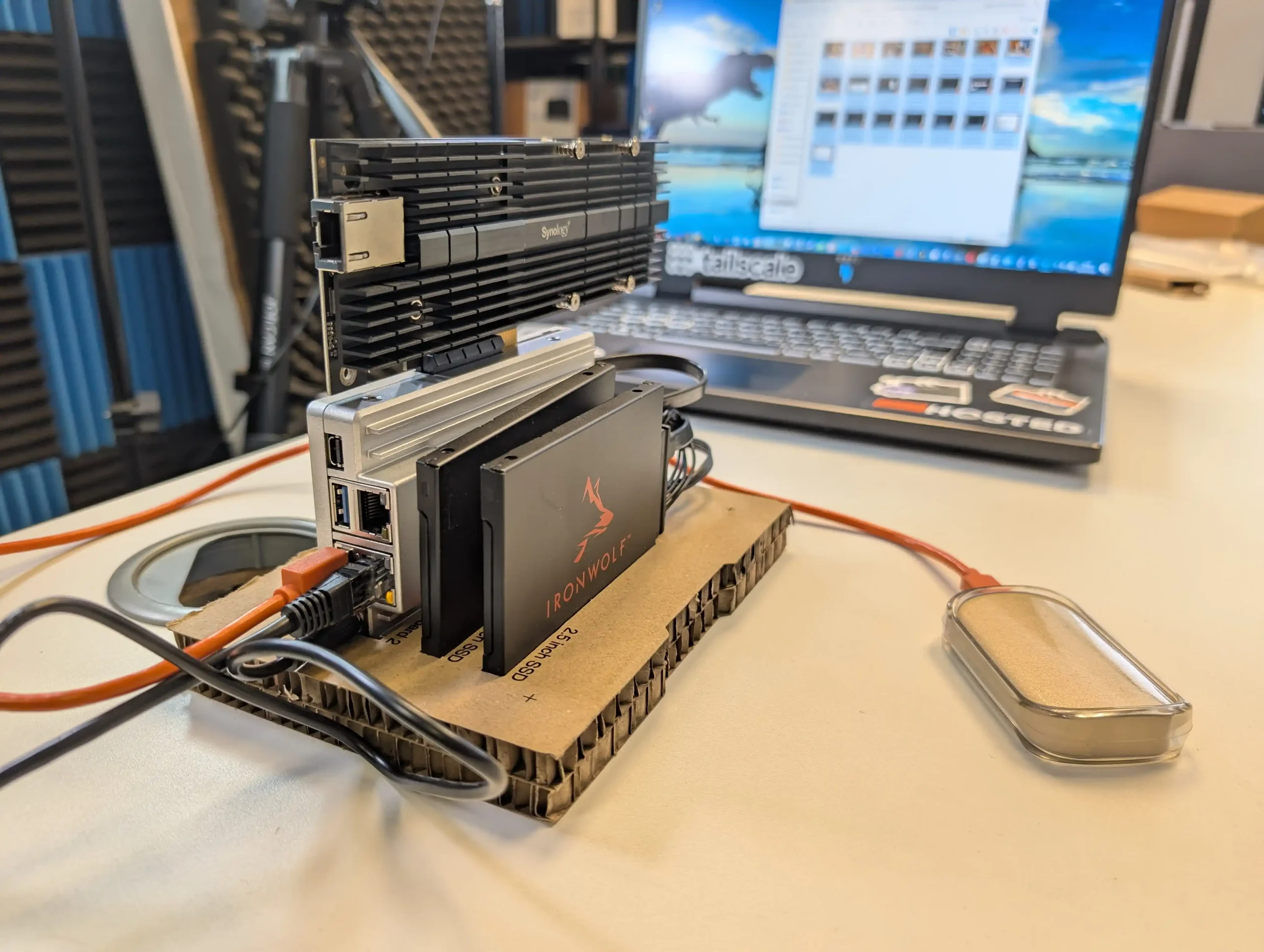
Zimaboard 2 Review – Quick Conclusion
The ZimaBoard 2 is a compact, x86-based single board server that strikes a balance between flexibility, efficiency, and affordability. It offers solid performance for its size, thanks to an Intel N150 processor, dual 2.5GbE ports, and a PCIe 3.0 x4 slot for meaningful expansion, making it suitable for tasks like media serving, light virtualization, and home automation. However, limitations such as non-upgradable 8GB RAM, slow onboard eMMC storage, and reliance on passive cooling require careful consideration for more demanding workloads. ZimaOS provides a user-friendly starting point with Docker support and basic file management, though advanced users may prefer to install alternative operating systems. Overall, the ZimaBoard 2 is a capable and well-engineered device for DIY server enthusiasts who understand its constraints and plan their use case accordingly
NOTE – You can visit the Zimaboard 2 Crowdfunding Page (live from 10:30AM ET 22nd April 2025) by clicking the banner below. The entry price for early backers is $169, but that will revert to $179 (and $239 for a scaled-up storage and memory version). I DO NOT receive any kind of affiliate commission or sponsorship for this review (and this review, like all reviews at NASCompares, was done without the brand in question’s interference or input). You can use the link HERE to see the campaign for yourself and/or click the banner below:
Zimaboard 2 Review – Design and Hardware
The physical build of the ZimaBoard 2 continues IceWhale’s trend of delivering thoughtfully designed hardware. The full aluminum enclosure gives the board a sturdy, premium feel, while also serving as its main cooling surface. Every port is clearly labeled, and the board layout is practical and accessible.
| Component | Details |
|---|---|
| Processor | Intel® N150 (4 cores, 6MB cache, up to 3.6GHz) |
| Memory | 8GB LPDDR5x @ 4800MHz (soldered, non-upgradable) |
| Internal Storage | 32GB eMMC (soldered) |
| LAN | 2 x 2.5GbE Ethernet ports (Intel chipset) |
| Storage Interfaces | 2 x SATA 3.0 (6Gb/s) with power |
| USB Ports | 2 x USB 3.1 |
| Display Output | 1 x Mini DisplayPort 1.2 (up to 4K @ 60Hz) |
| PCIe Expansion | 1 x PCIe 3.0 x4 |
| Cooling | Passive cooling (full metal heatsink enclosure) |
| Graphics Features | Integrated graphics (up to 1GHz), Intel® Quick Sync Video |
| Virtualization Support | Intel VT-x, VT-d, AES-NI |
| Power Supply | 12V / 3A DC input |
| TDP | 6W |
| Dimensions | 140mm x 81.4mm x 31mm |
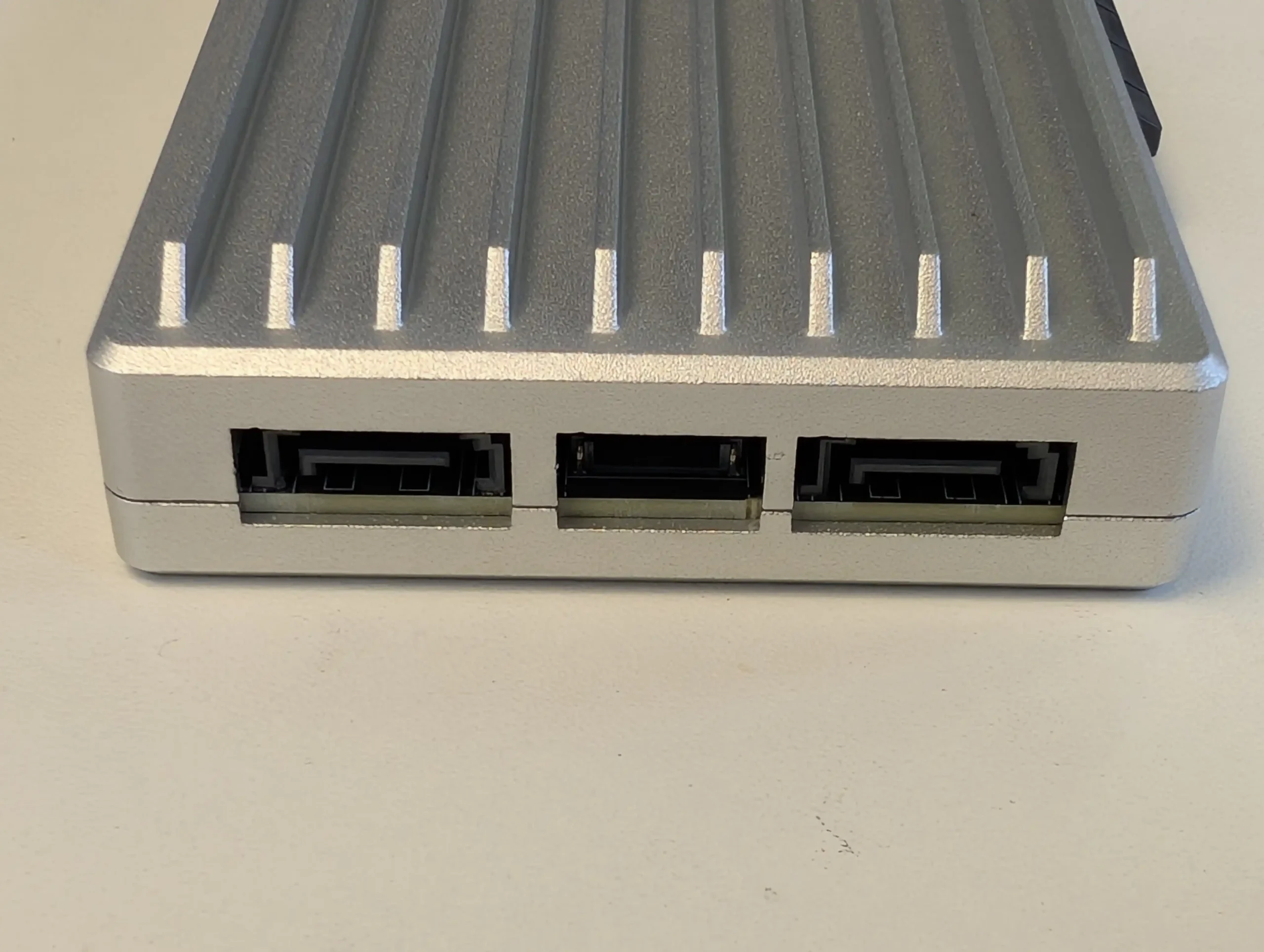
The PCIe slot includes a pre-cut section to accommodate longer cards, allowing for flexibility even in this small form factor. IceWhale also includes eco-friendly packaging, a detail that reflects both brand identity and attention to user experience. A cardboard insert allows users to hold the board upright alongside drives, useful for initial setup before a case is selected.
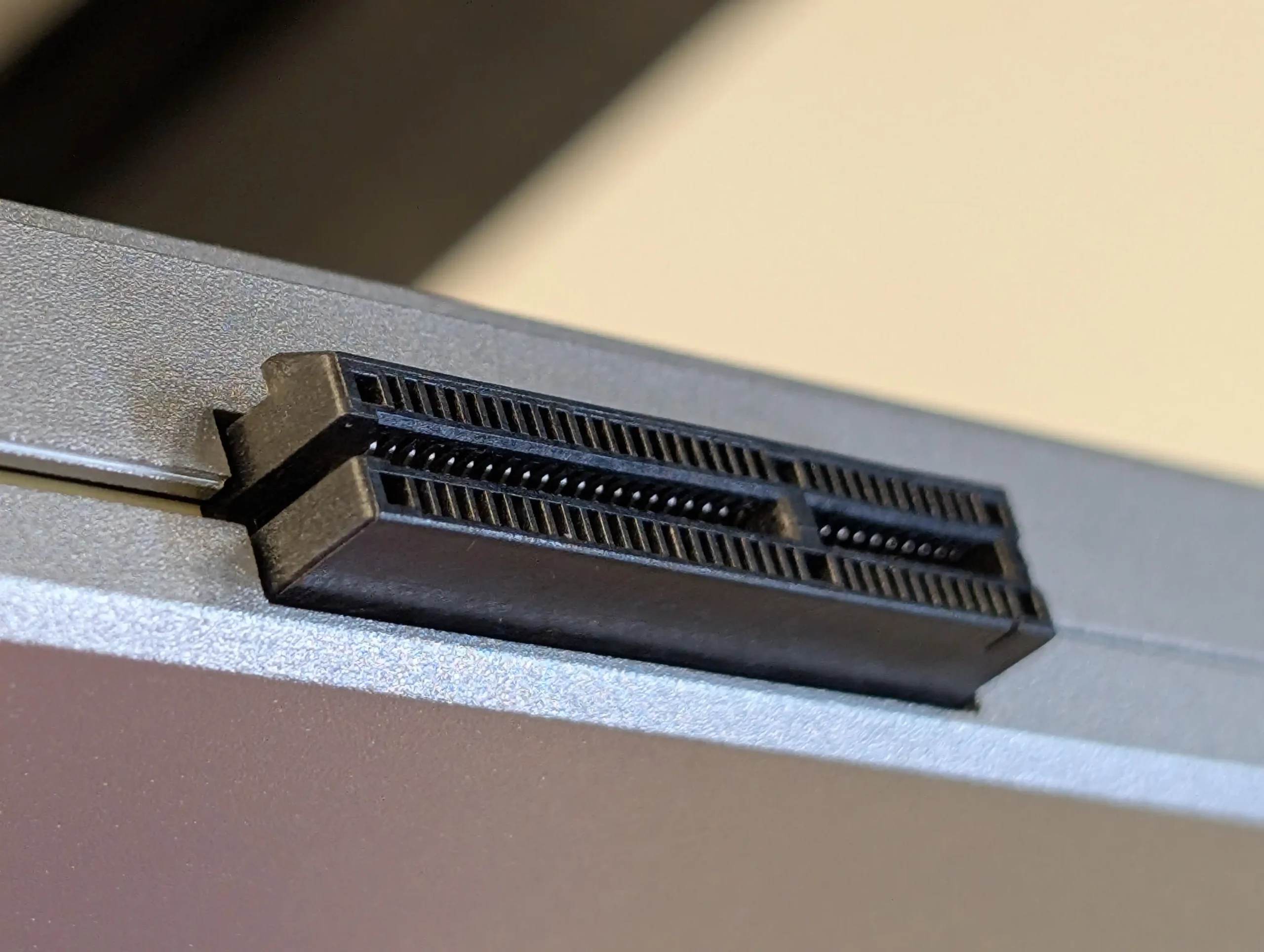
Optional accessories like a SATA adapter board with combined data/power connectors and third-party-compatible drive cages help complete the DIY experience. However, there are some practical limitations to consider: the soldered RAM means users must carefully plan for memory demands, and the internal storage, while functional, will not satisfy users looking for fast OS performance.
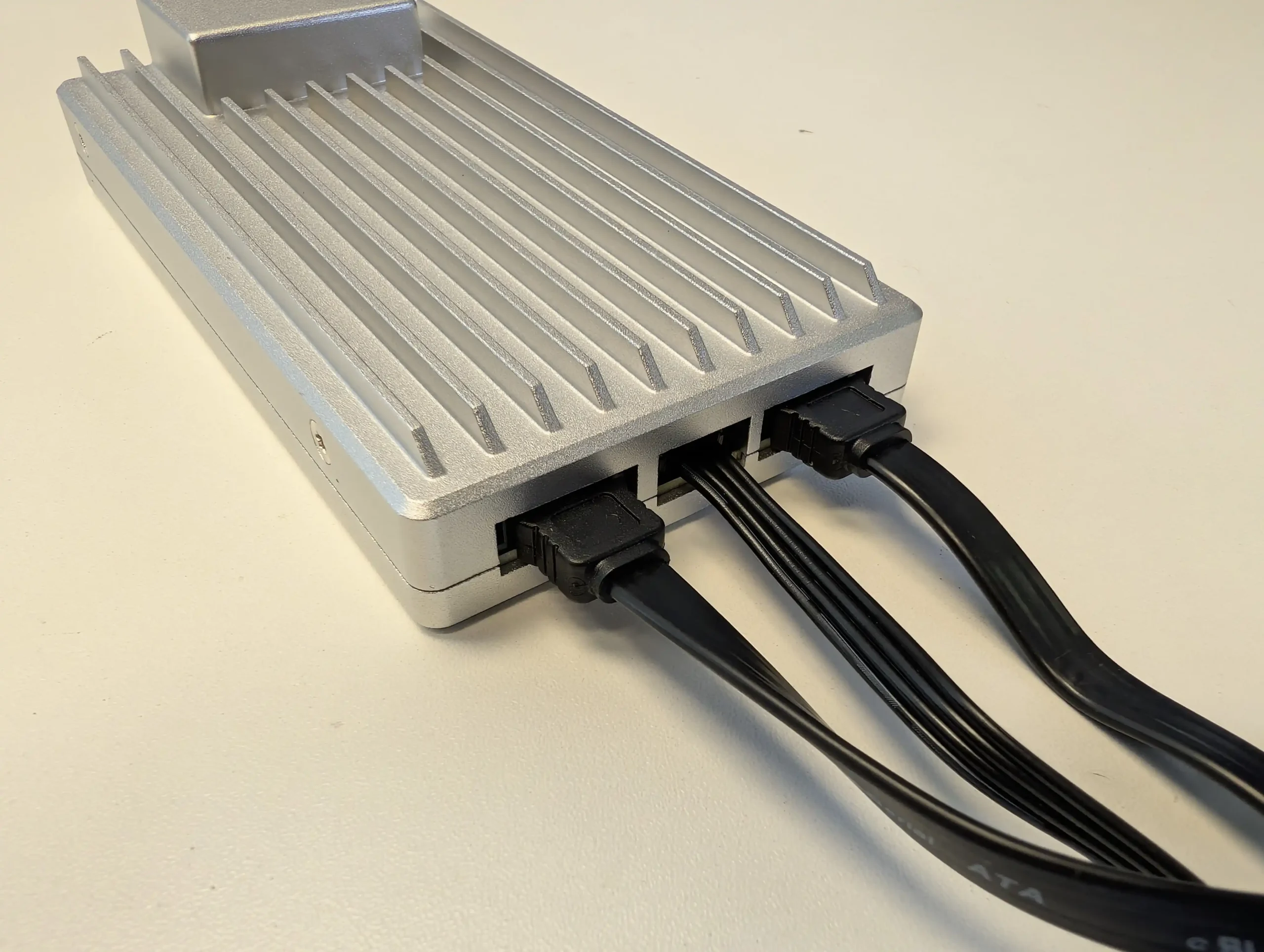
At the core of the ZimaBoard 2 is the Intel N150 processor, part of Intel’s Twin Lake architecture, offering four cores with a base clock that boosts up to 3.6GHz. This chip represents a significant step forward compared to the Celeron N3450 used in the original ZimaBoard, delivering better single-thread and multi-thread performance while maintaining a low 6W TDP.
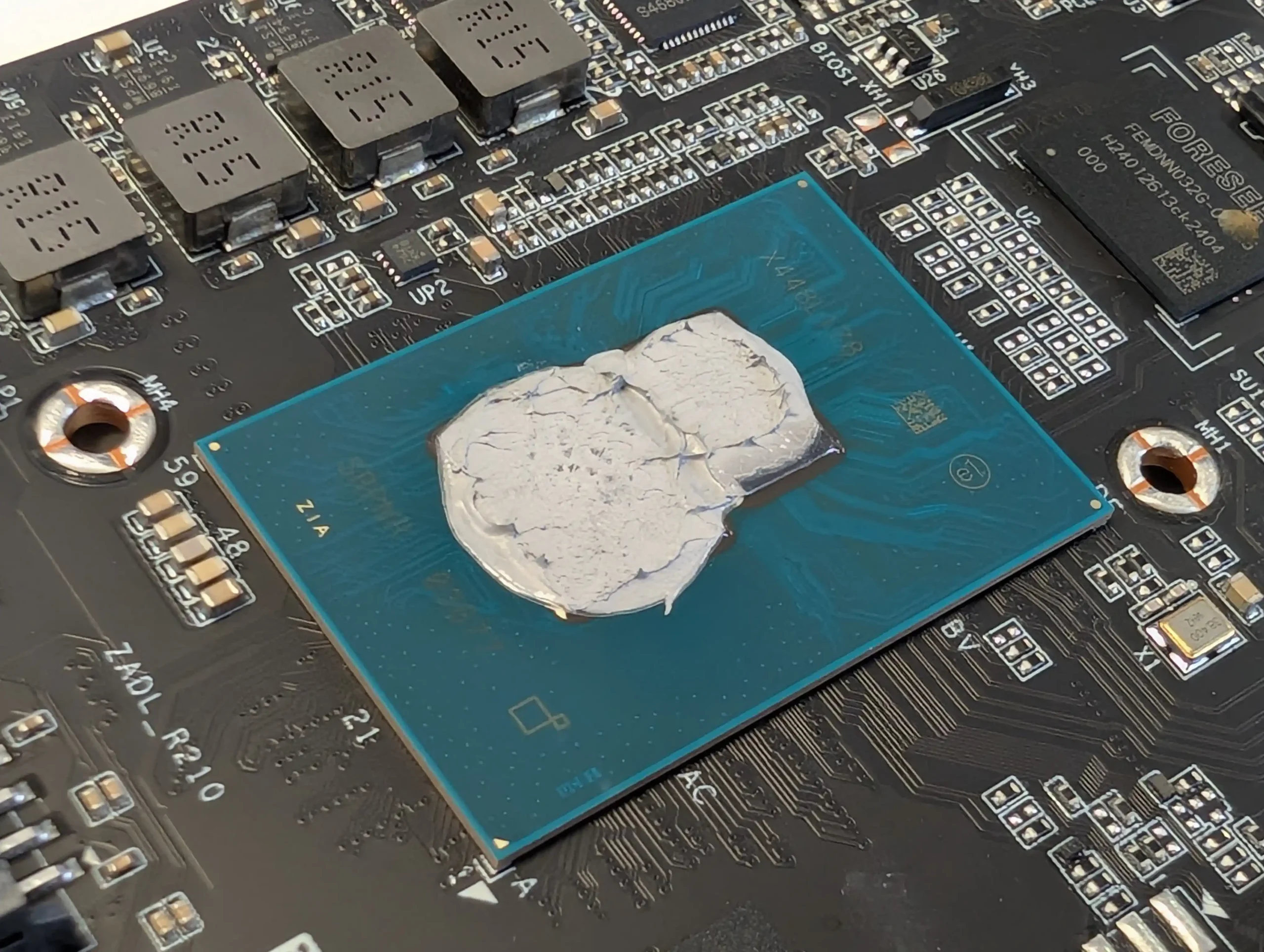
Complementing the CPU is 8GB of LPDDR5x memory clocked at 4800MHz. While the use of fast memory is a welcome improvement, the limitation lies in its soldered nature—users cannot expand beyond this capacity.
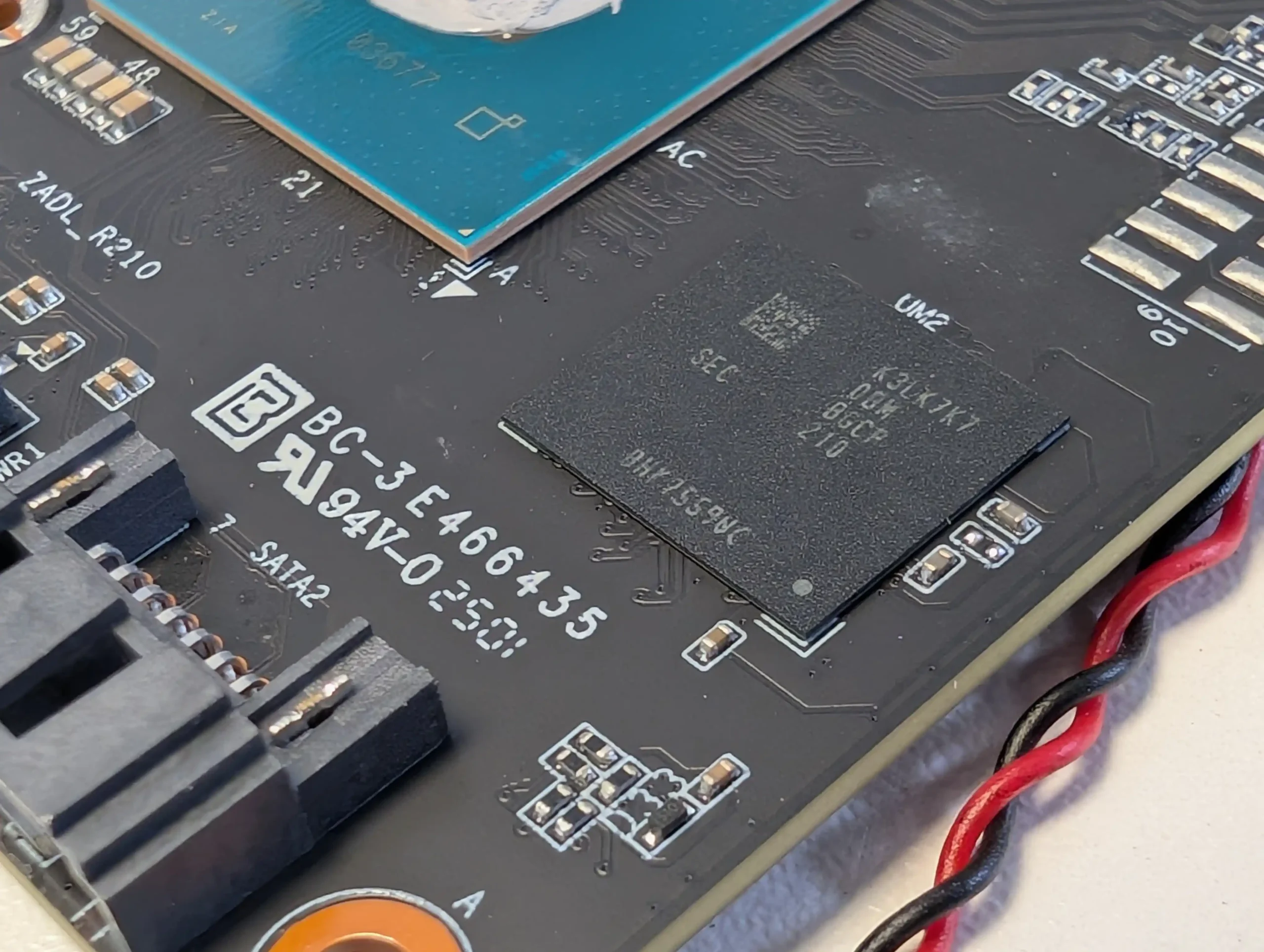
This decision may be acceptable for light workloads such as running a Plex server, Docker containers, or Home Assistant, but it could become a bottleneck for users planning to run multiple VMs or resource-heavy services. The N150 CPU does support hardware virtualization and Intel AES-NI, which is essential for tasks like encrypted storage or virtual machine deployment.
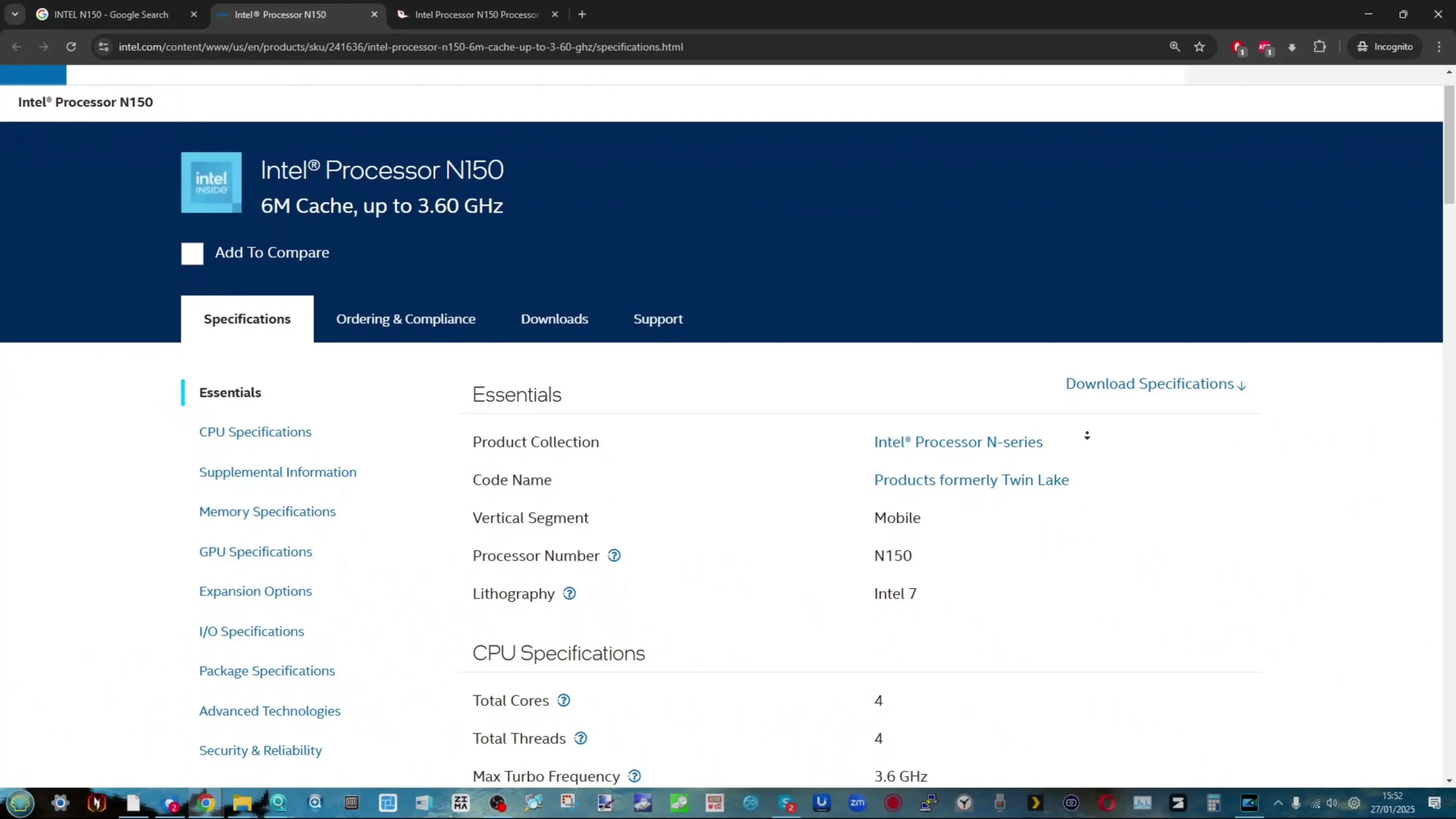
In testing scenarios, the CPU delivered solid performance across typical tasks, and managed to keep up during multi-tasked environments with multiple services active. However, users with ambitions for more demanding applications will need to balance those expectations against the non-upgradable memory ceiling.
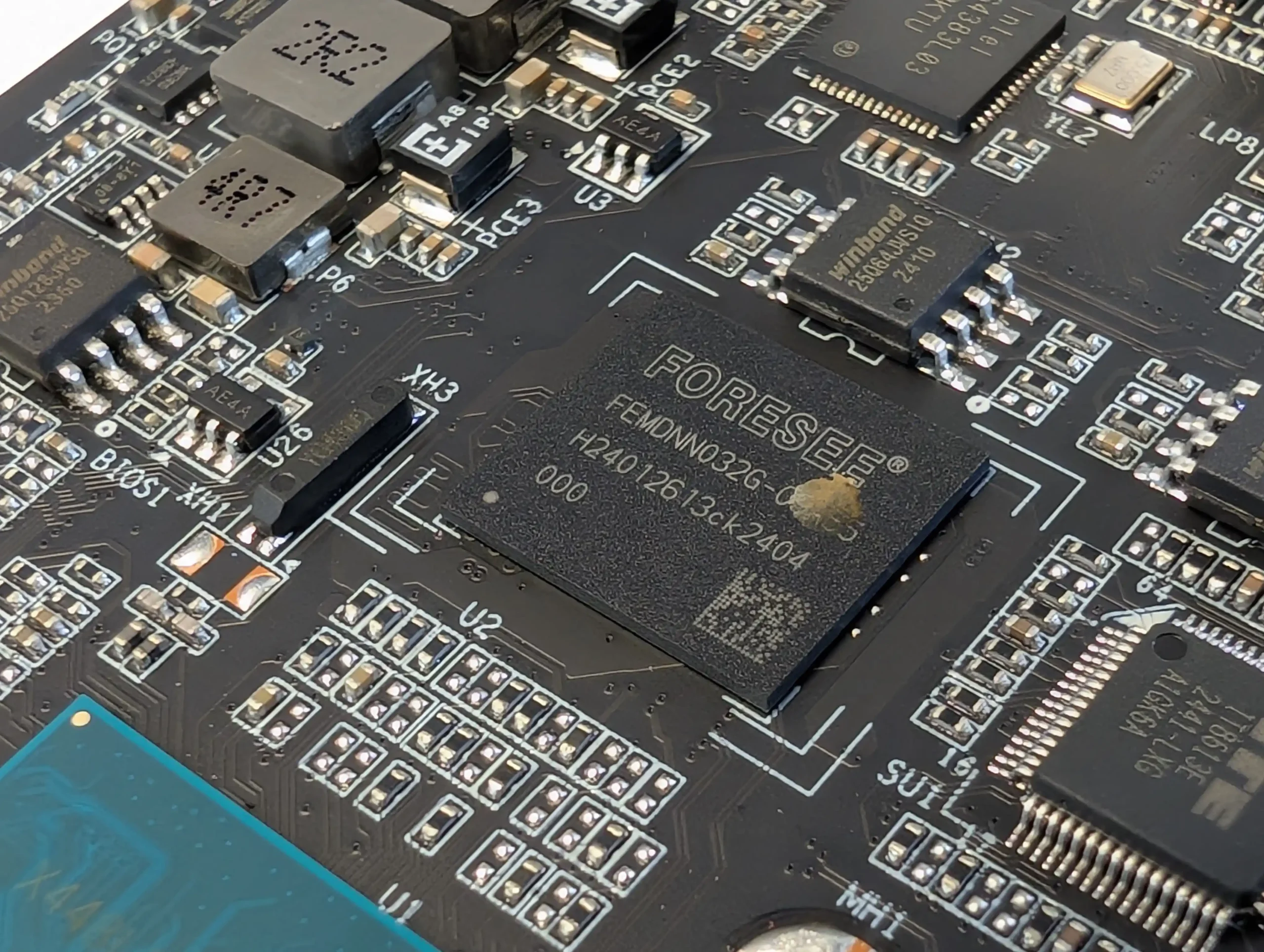
ZimaBoard 2 comes with 32GB of onboard eMMC storage, a choice that is both practical and limiting. This eMMC module is soldered to the board and is intended to house ZimaOS out of the box, giving users a ready-to-use system upon first boot. While this inclusion lowers the barrier to entry and simplifies setup for beginners, it presents performance limitations and a lack of flexibility. In testing, write speeds hovered around 35MB/s during mixed I/O operations, which is noticeably slow for tasks that involve frequent read/write cycles.
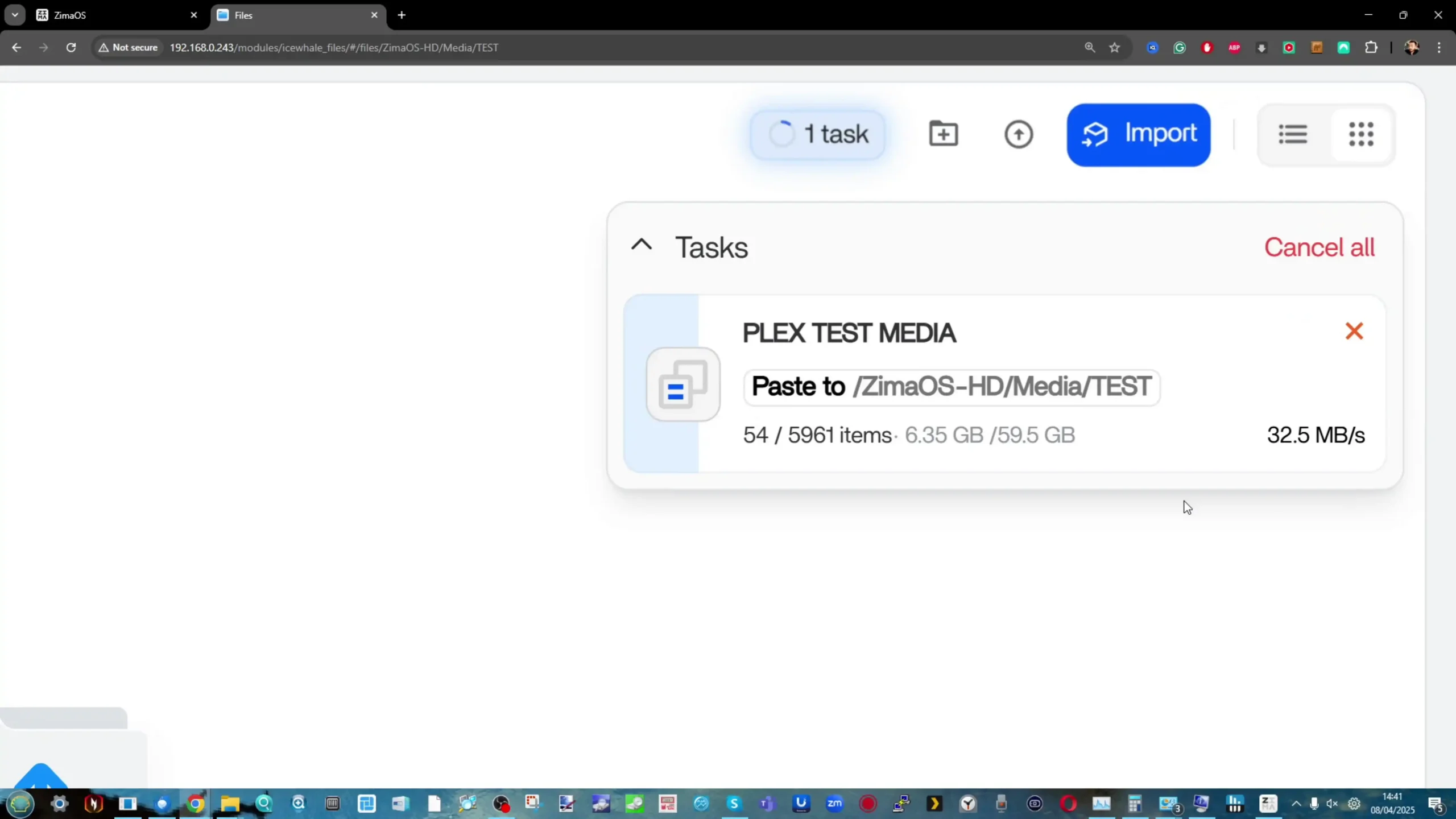
Moreover, should a user opt to install a different OS—such as TrueNAS SCALE, Proxmox, or Unraid—they would either overwrite the bundled ZimaOS or need to boot from an external USB or PCIe-based drive. Since the internal storage is neither M.2 nor socketed, it lacks the speed and modularity enthusiasts often seek in modern setups. As a result, users planning to use ZimaBoard 2 as a primary virtualization or storage server are better off supplementing it with faster storage via USB 3.1, SATA, or the PCIe slot for booting alternative OS environments. This caveat underscores a recurring theme with ZimaBoard 2: it’s well-positioned for entry-level use but requires external upgrades for more ambitious workflows.
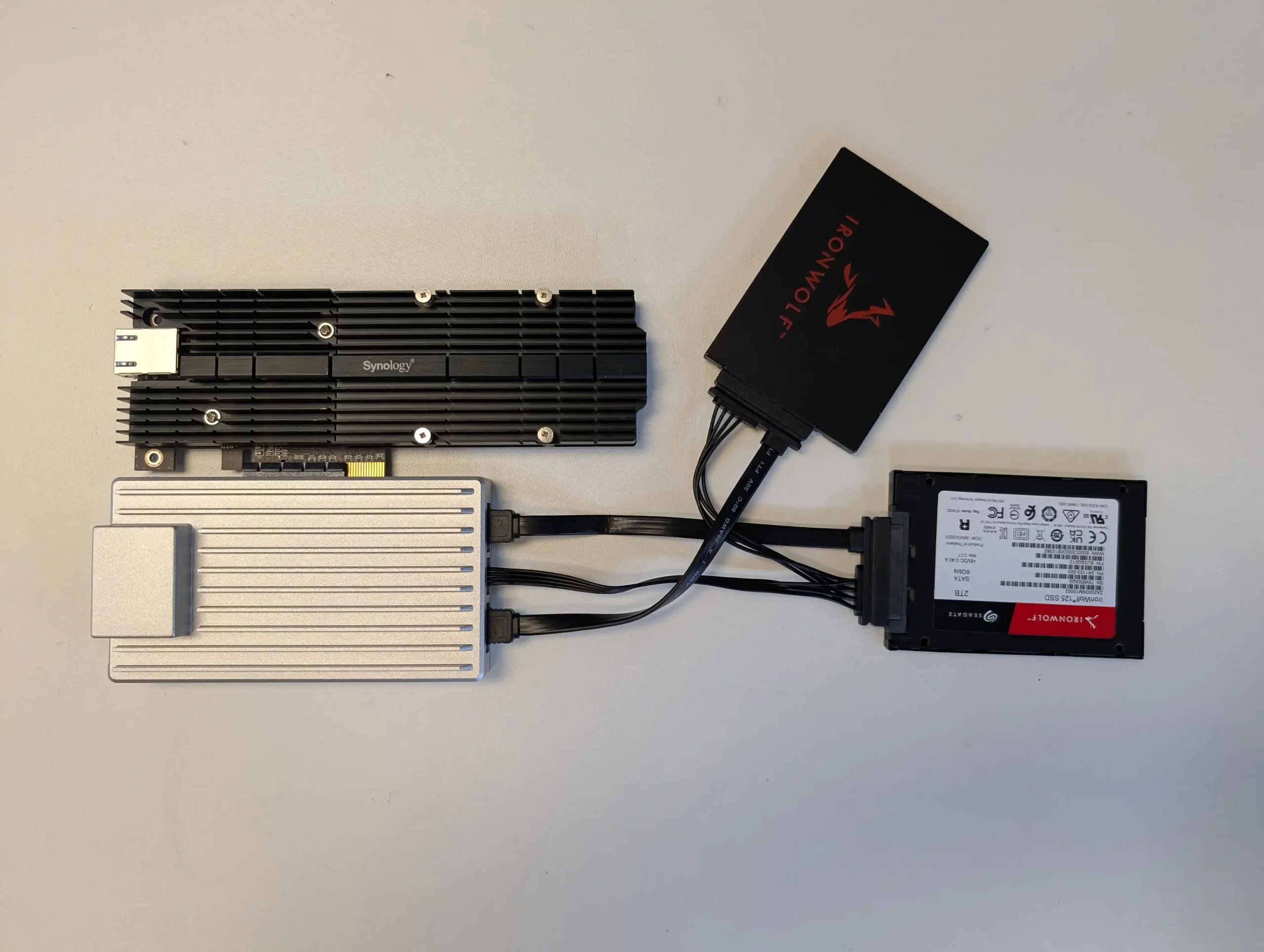
One of the ZimaBoard 2’s most compelling features is its inclusion of two SATA 3.0 ports alongside a full PCIe 3.0 x4 slot. This greatly expands the device’s potential beyond typical SBCs, offering users a reliable way to build custom NAS setups, integrate high-speed NVMe storage, or even install networking and accelerator cards. During testing, a Synology combo card featuring two M.2 NVMe slots and a 10GbE Ethernet port was installed in the PCIe slot. The board successfully recognized all interfaces, demonstrating full PCIe compatibility and allowing throughput measurements to confirm the system could push high-bandwidth traffic.
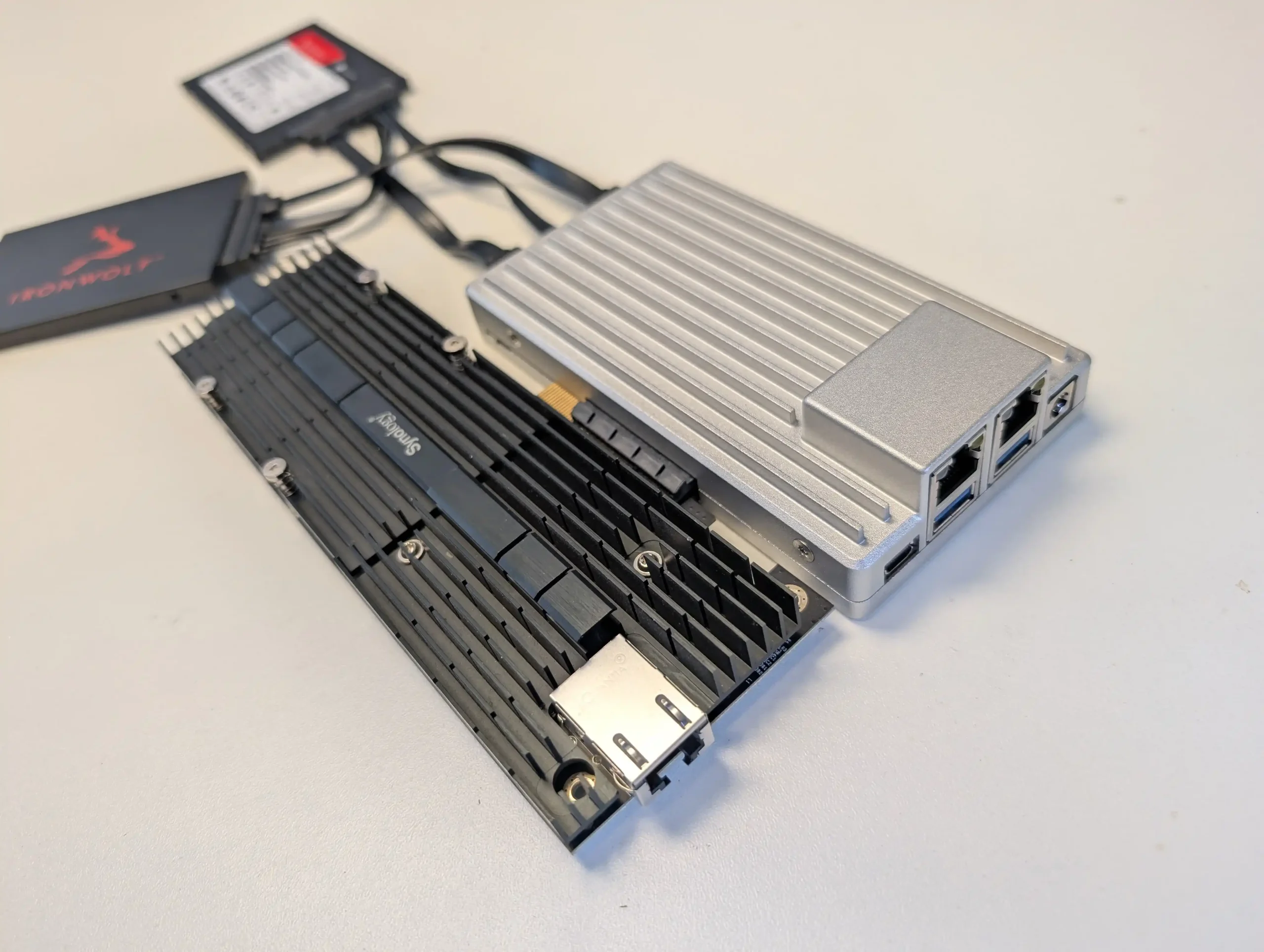
With up to 4GB/s of bandwidth over PCIe, users can install expansion cards for fast storage, additional networking, or even compute offloading—although the small form factor means thermal and power considerations become important quickly. The SATA ports, while standard in speed, proved perfectly functional for connecting 2.5″ SSDs or traditional HDDs. IceWhale’s own accessories, like SATA power adapters and drive cages, help streamline this process, though third-party solutions work just as well.
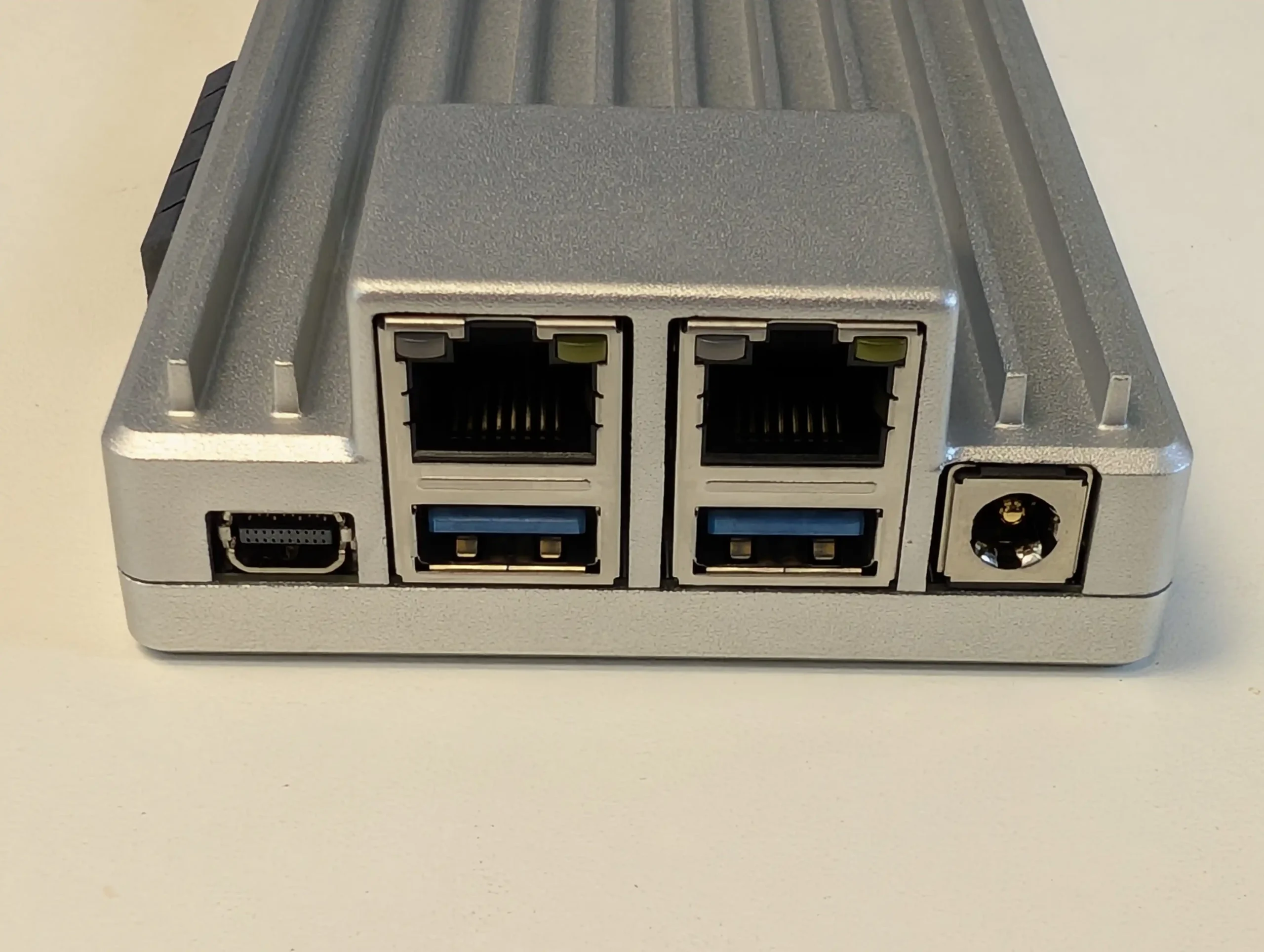
For users aiming to transform this board into a flexible micro-server, this PCIe slot is a gateway to many possibilities and a key reason ZimaBoard 2 stands out in its category.
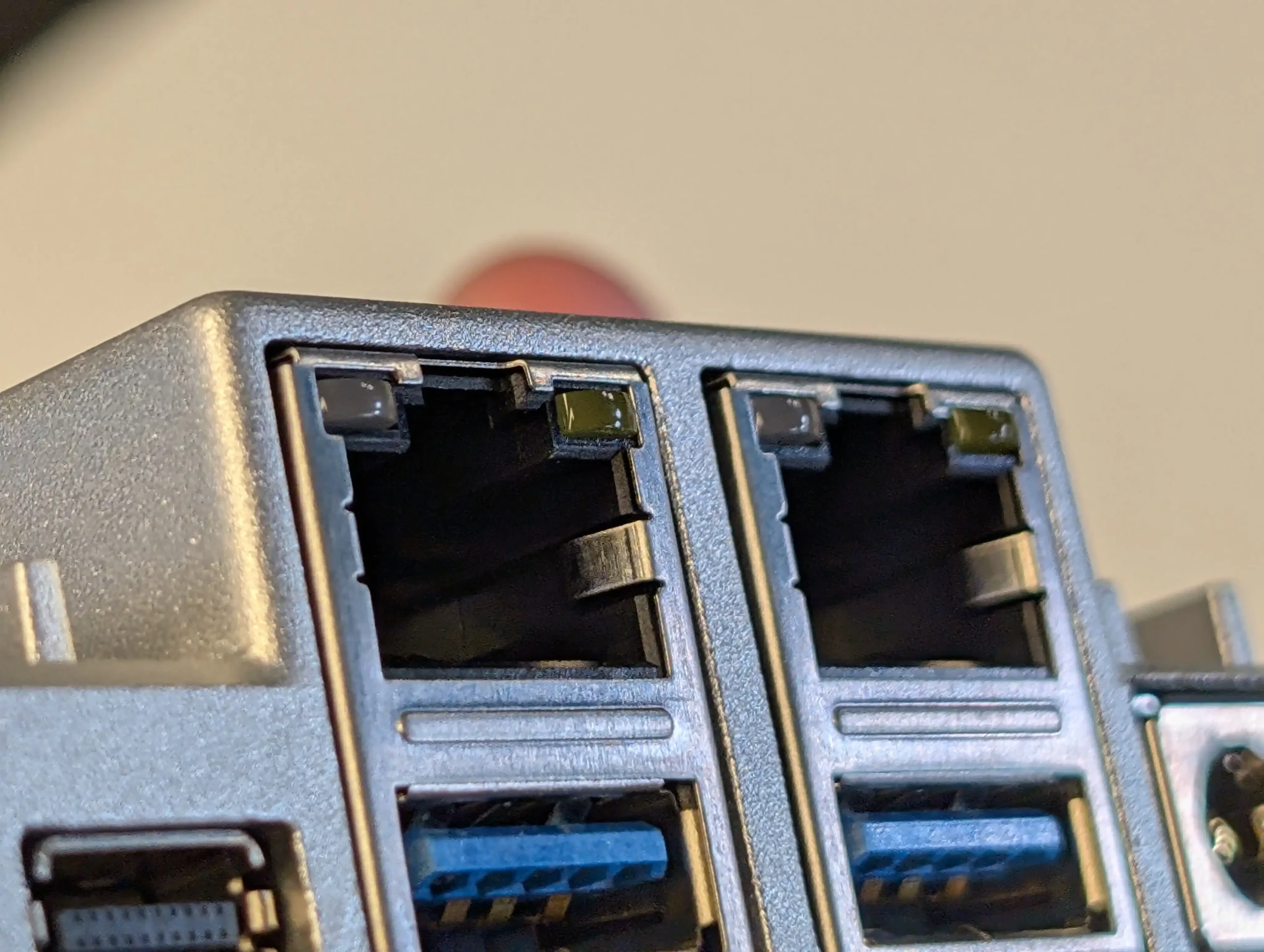
In terms of networking, the ZimaBoard 2 comes equipped with two 2.5GbE Ethernet ports, both powered by Intel chipsets—a choice that emphasizes reliability and driver compatibility across various operating systems. These ports are more than just a checkbox feature; they performed reliably under load and achieved full link saturation during file transfer tests and when used in conjunction with PCIe expansion.
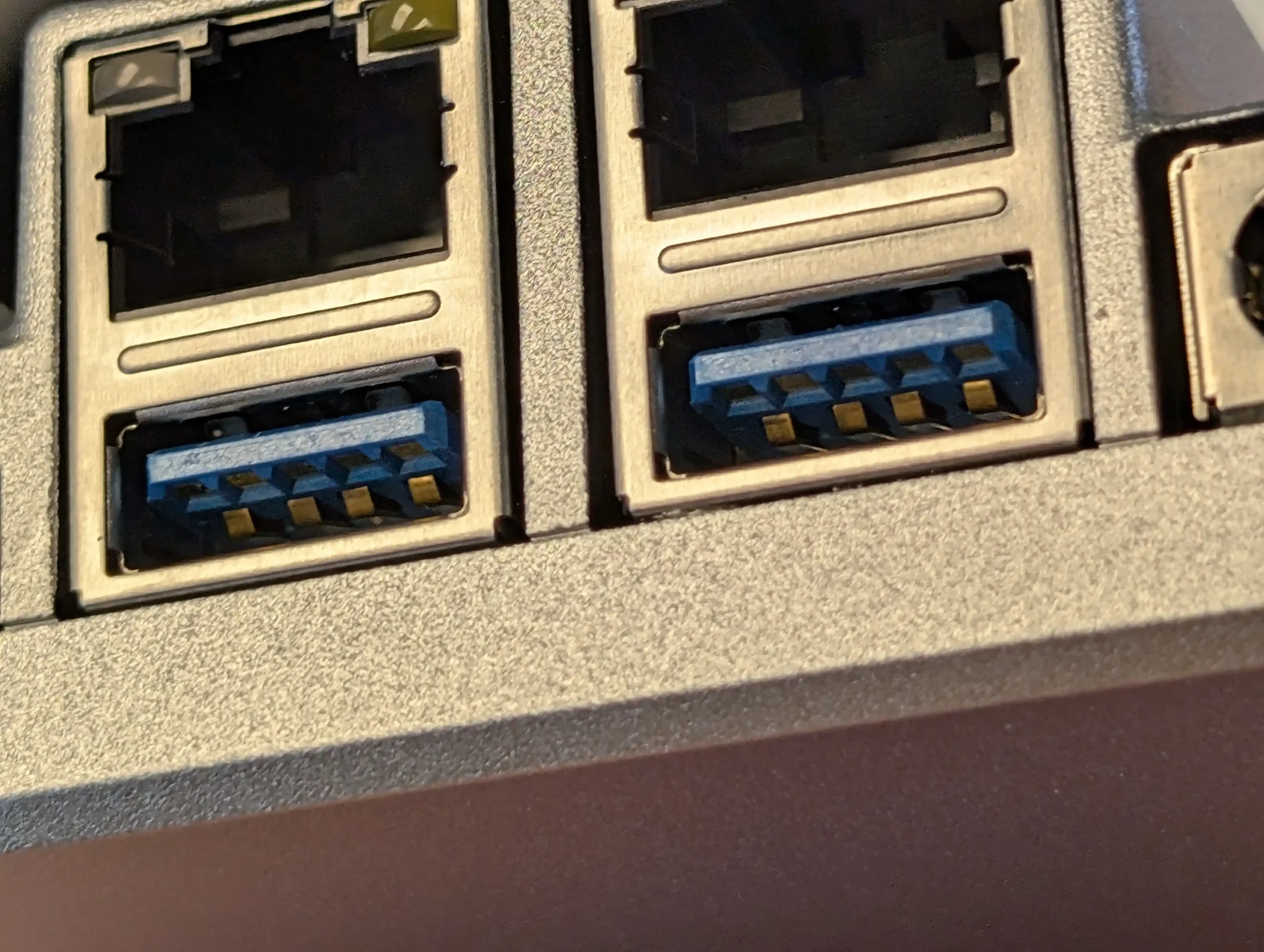
In more advanced setups, users can configure bonding or load balancing to maximize throughput or redundancy. Additionally, there are two USB 3.1 ports for attaching external drives, peripherals, or USB-bootable OS images.
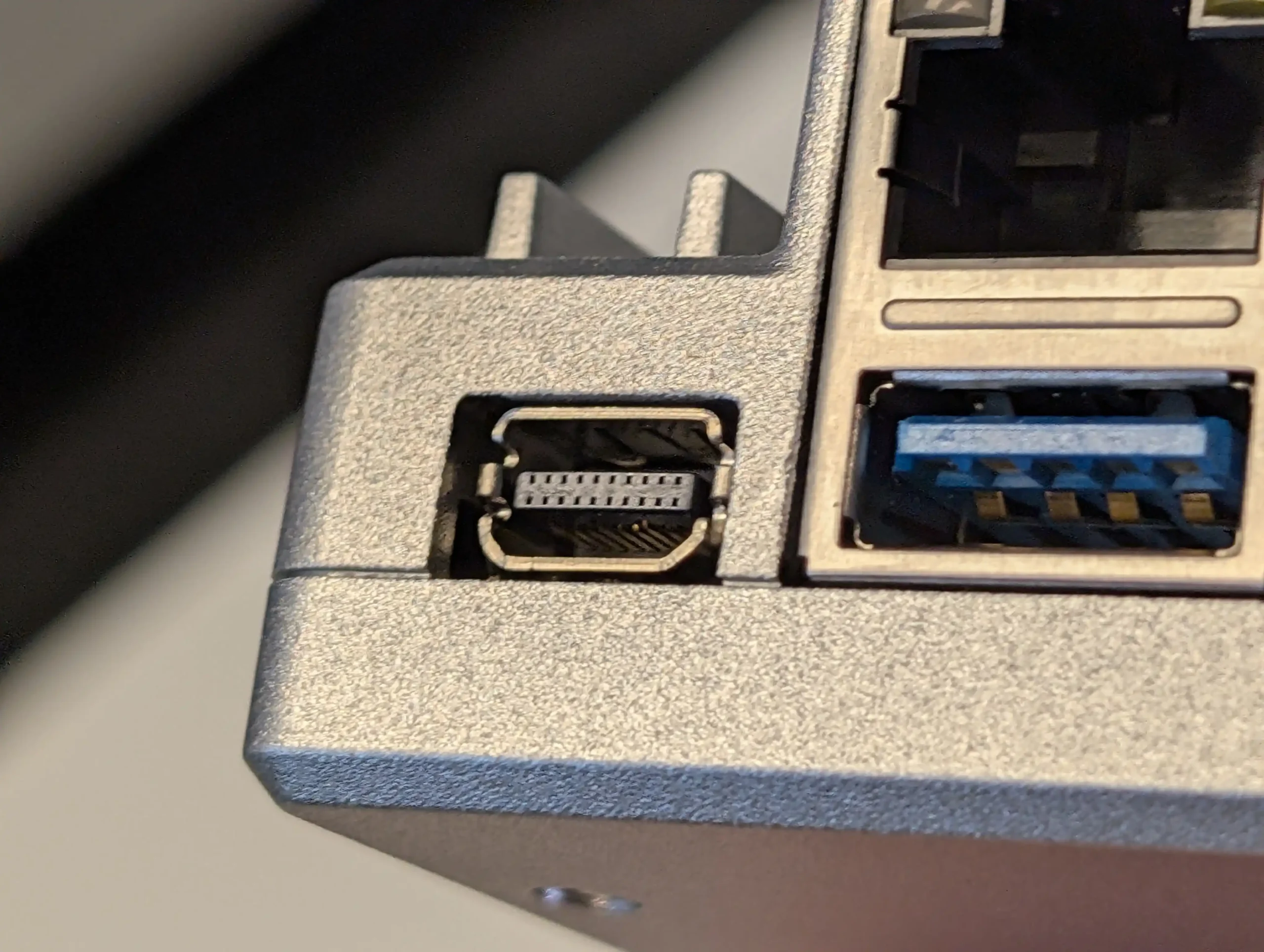
The inclusion of a Mini DisplayPort 1.2 allows for 4K video output at 60Hz, which is useful for users who want to use the board as a lightweight desktop or for initial OS installation and diagnostics—though it does require an adapter to convert to standard HDMI. Notably absent is built-in Wi-Fi or Bluetooth, which aligns with its target audience of wired-first home labs and embedded installations. Overall, ZimaBoard 2 offers a well-rounded set of connectivity options that exceed expectations for its size, with the dual 2.5GbE ports making it particularly attractive for networking-focused use cases like firewalls, proxies, or containerized gateways.
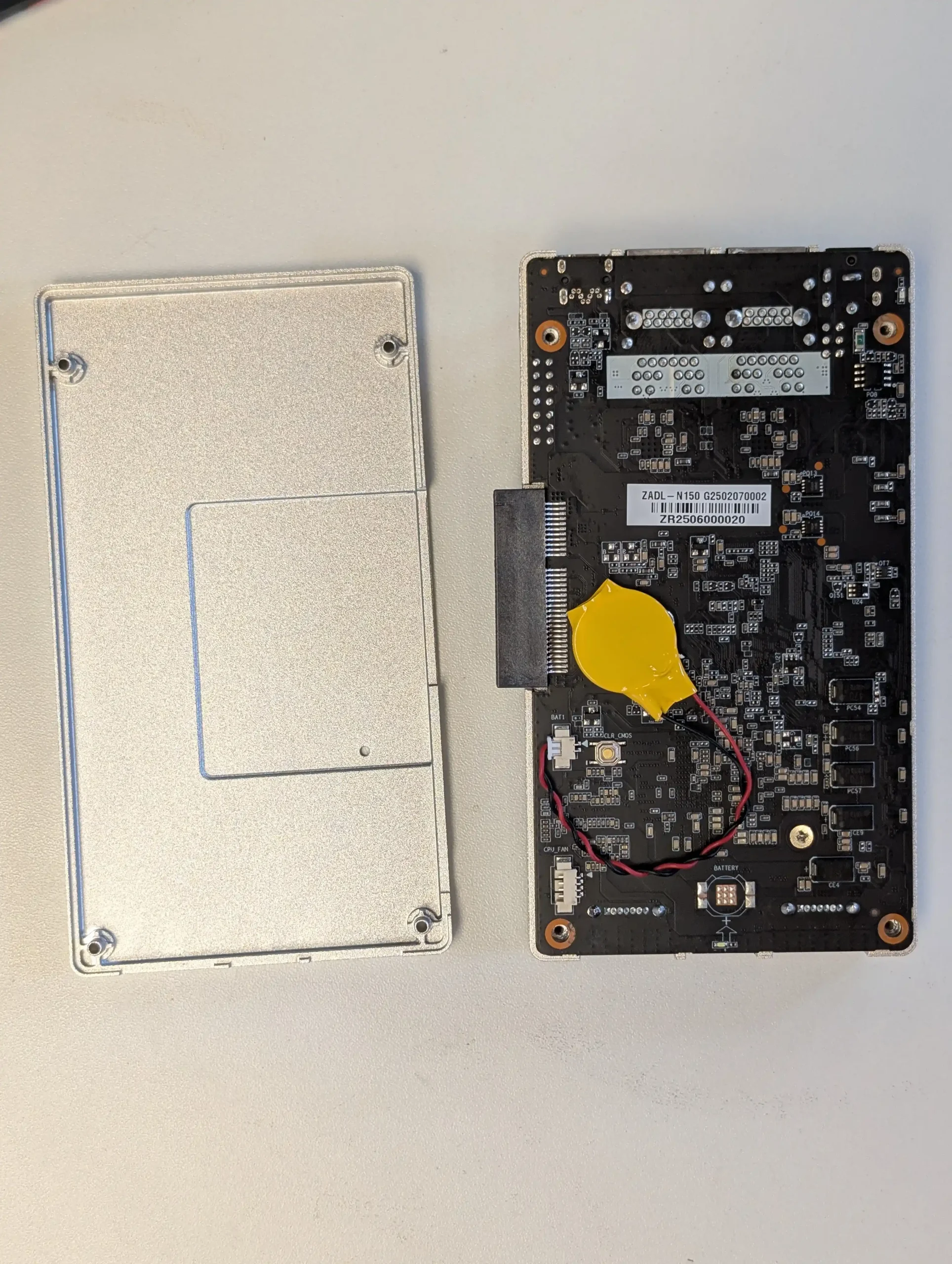
Thermal management on the ZimaBoard 2 is entirely passive, with the aluminum enclosure doubling as a heatsink to dissipate heat away from the CPU and other key components. This fanless approach results in completely silent operation, which is ideal for home or office environments where noise is a concern.
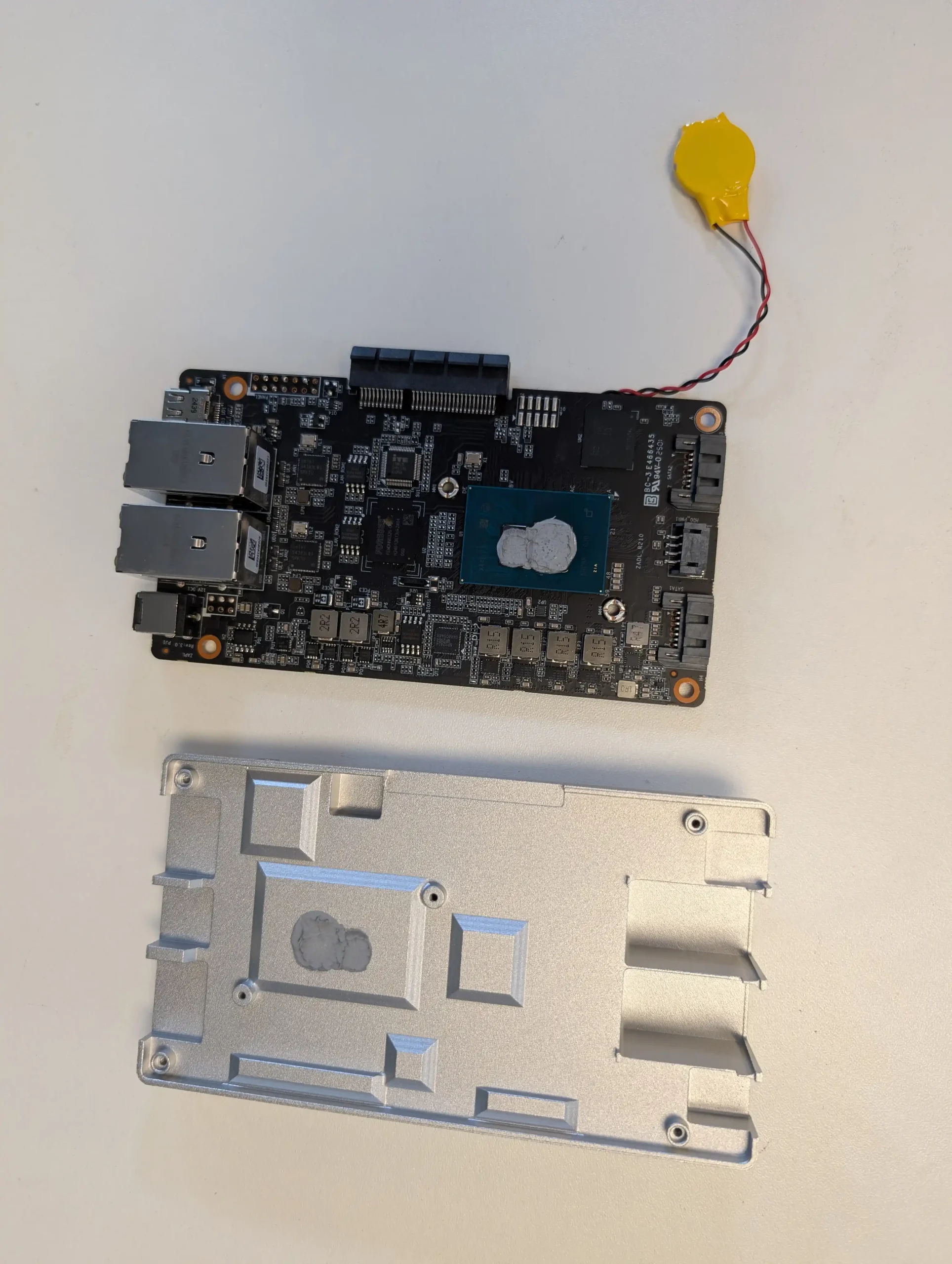
However, the trade-off is that the board’s temperature will steadily rise over time, especially in enclosed cases or cabinets with poor airflow. During idle operation, with minimal system load and attached drives in standby, temperatures hovered around 50°C after an hour, increasing slightly to 52–54°C over a 24-hour window.
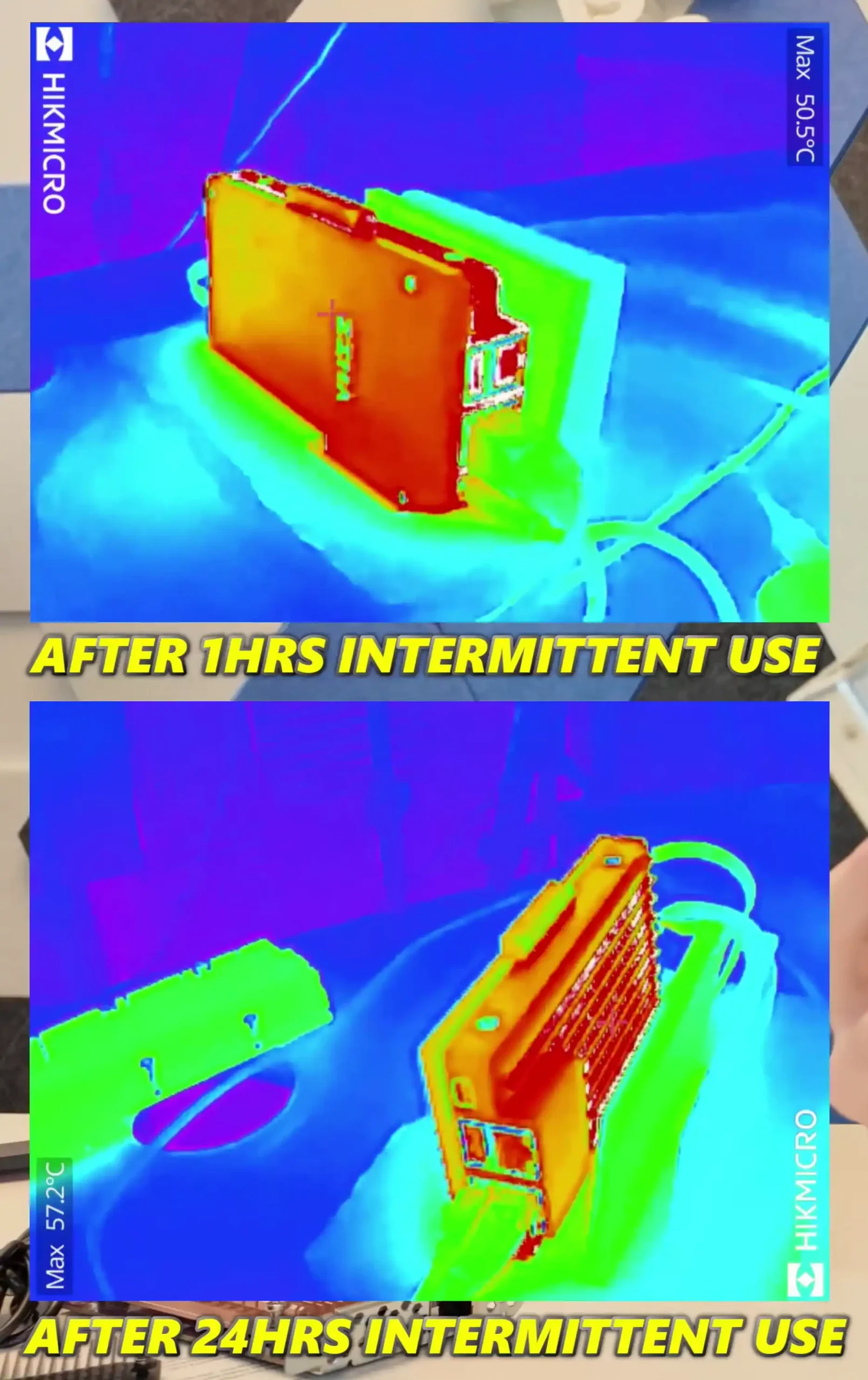
Under heavier usage—including Plex playback, VM activity, active networking, and full PCIe slot utilization—the system remained thermally stable but showed significant heat buildup. Power consumption in these high-usage scenarios peaked at approximately 39–40W, which is quite efficient given the workload.
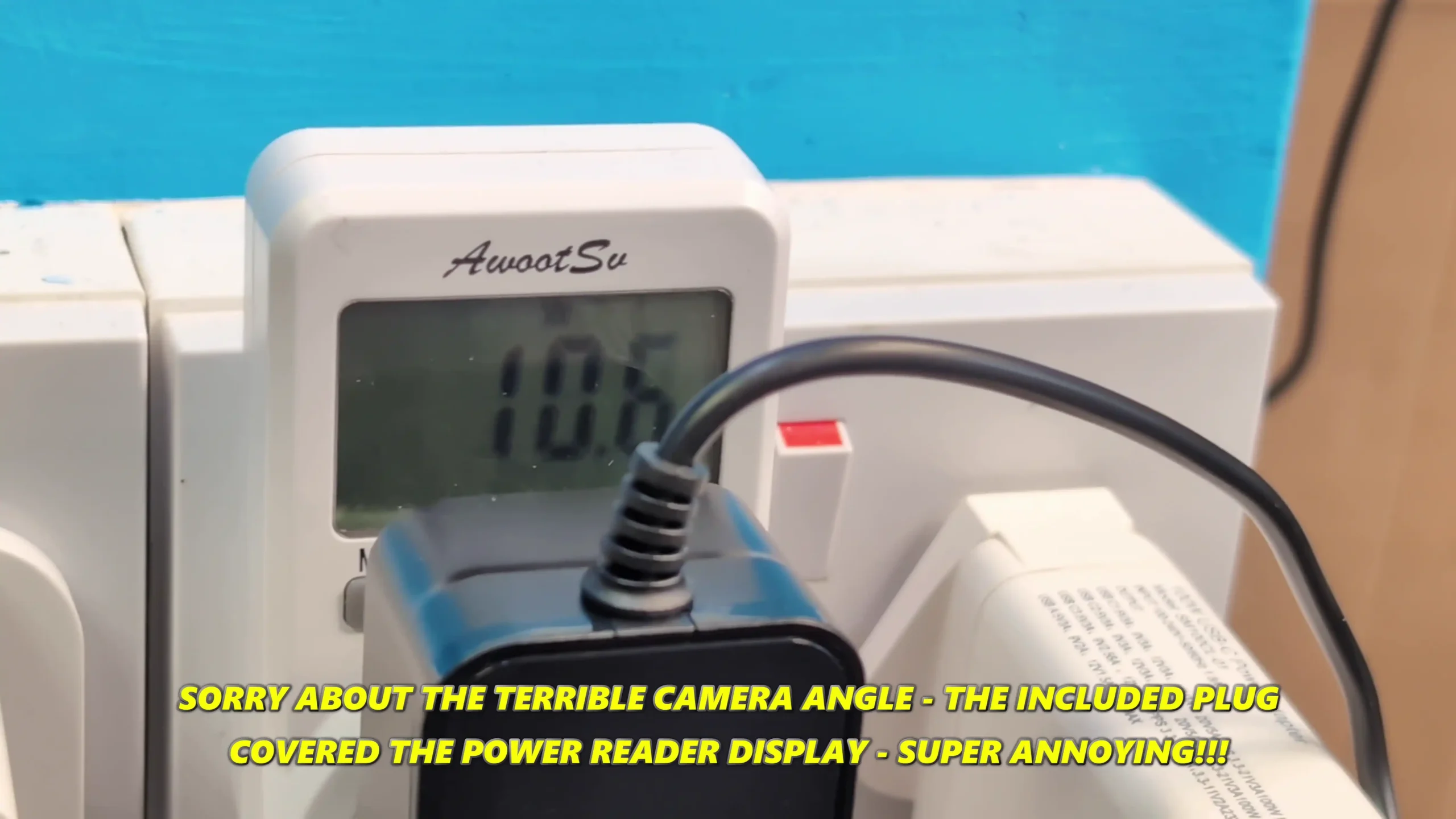
Still, users planning to run the board continuously under load are strongly encouraged to introduce active airflow or leave the system in a well-ventilated space. The all-metal build is a clever and minimalist solution, but it has practical limitations that users need to plan for—especially if operating in warmer environments or planning to enclose the unit in a tight chassis.
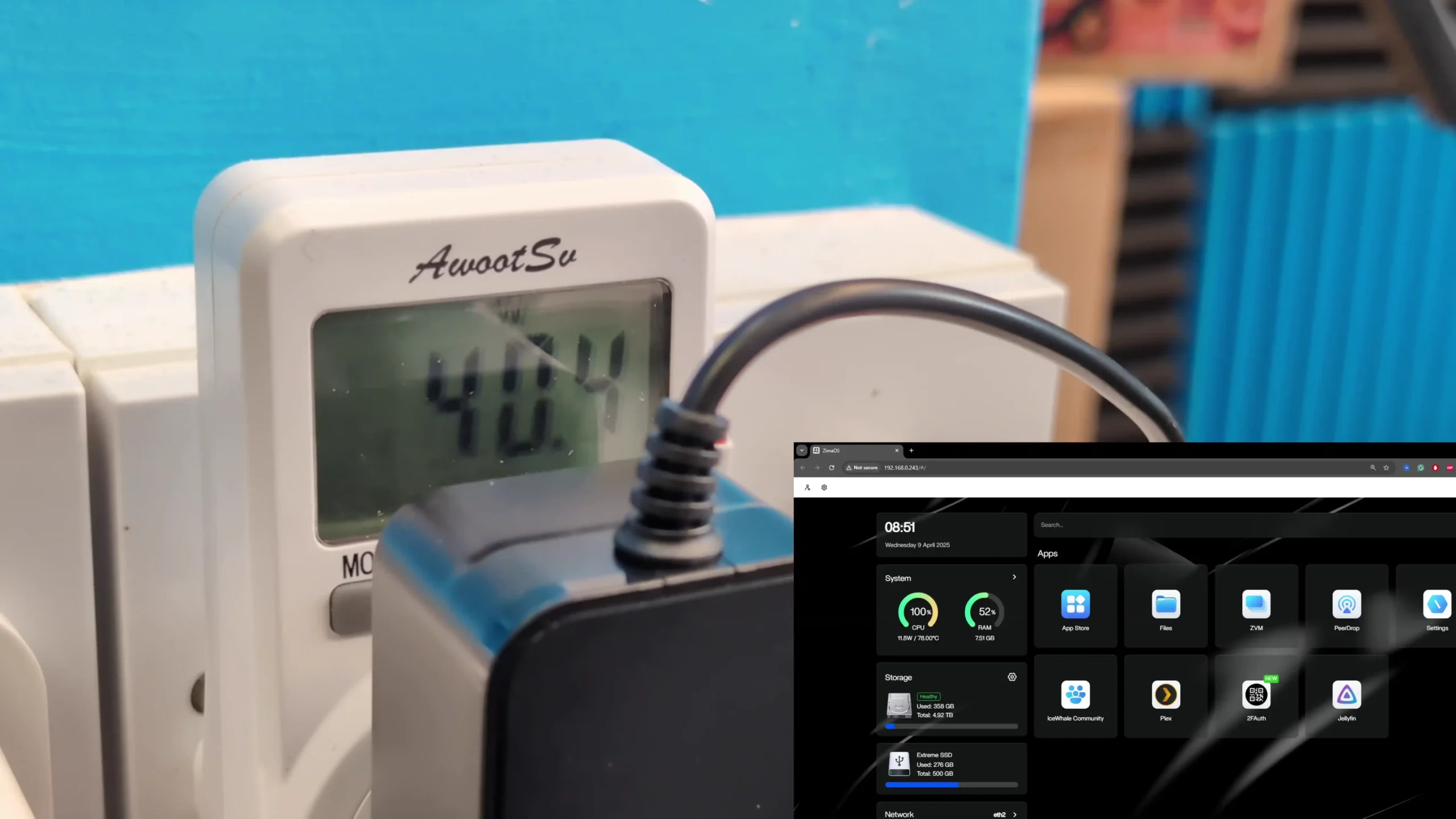
When put through real-world workloads, the ZimaBoard 2 delivered performance that largely aligned with its specs and design goals. File transfers over the onboard 2.5GbE interfaces reached full saturation in controlled conditions, proving the CPU and I/O subsystems are capable of pushing maximum throughput without significant bottlenecks. PCIe expansion further unlocked performance potential—especially with the Synology combo card, where simultaneous NVMe and 10GbE performance were tested. While NVMe read speeds reached up to 1.6GB/s, write speeds hovered around 500–700MB/s depending on traffic from the 10GbE port.
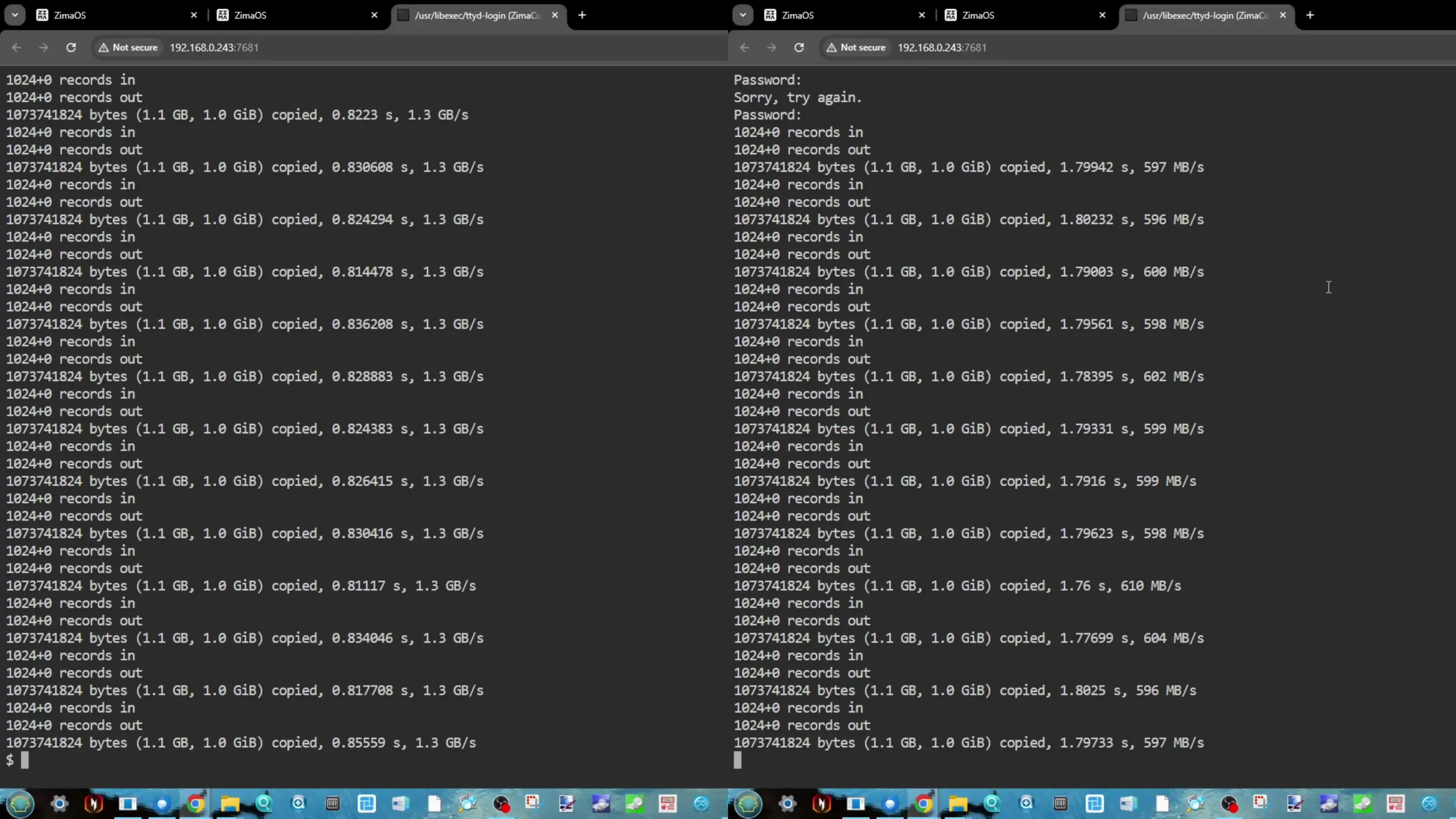
These variances are expected, given shared PCIe lanes and bandwidth contention, but overall results were respectable. Multimedia performance was also acceptable, with Plex running smoothly and able to stream and scrape metadata while supporting light VM usage concurrently.
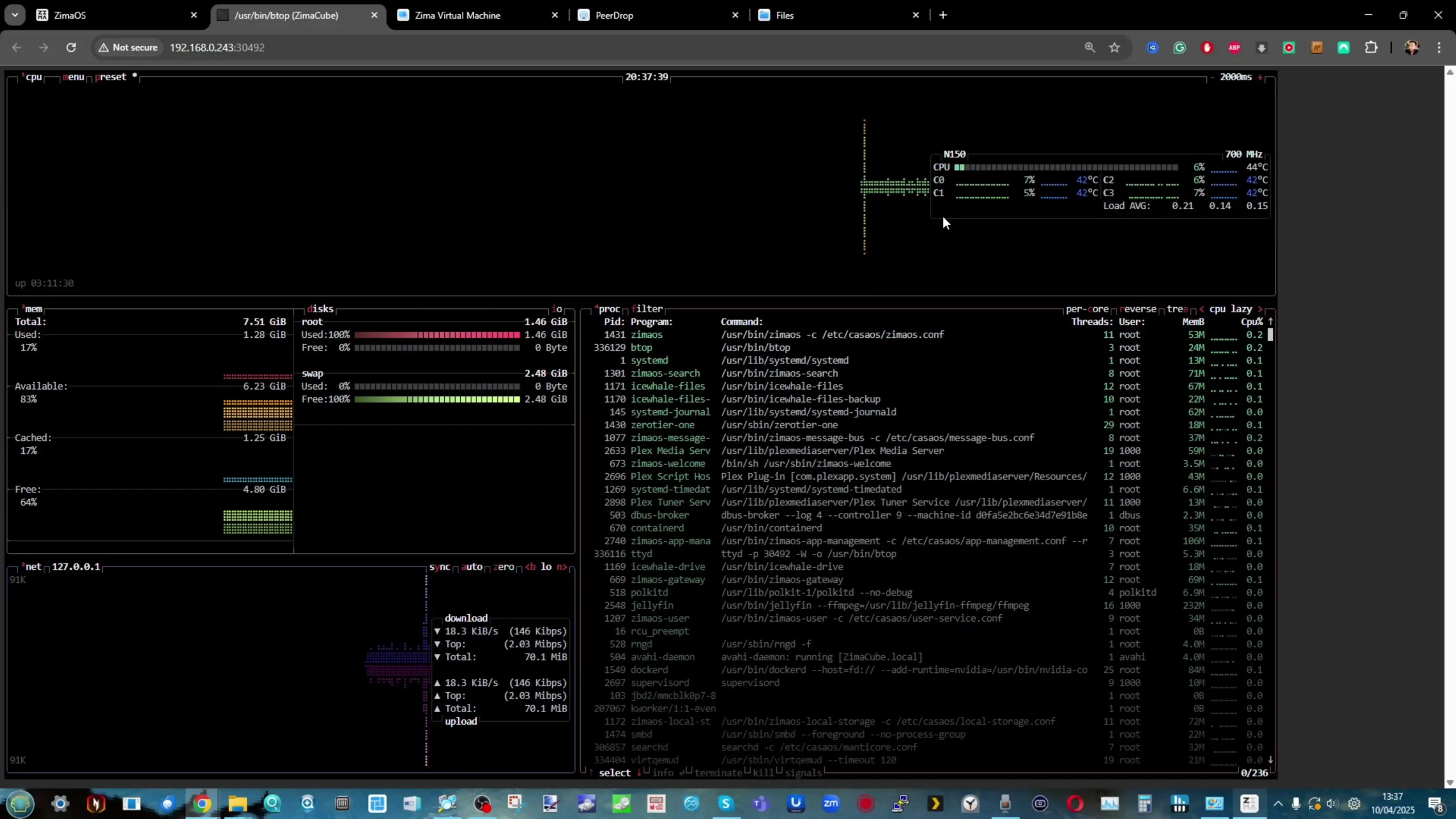
In these scenarios, RAM utilization climbed past 50% and CPU usage approached 100%, but the board remained operational and responsive. It’s clear that ZimaBoard 2 is well-suited to low-to-moderate workloads, and can punch above its weight with strategic expansion. However, pushing it into more demanding territory—like simultaneous virtualization, AI inferencing, or high-speed file serving across multiple interfaces—will begin to test its limits.
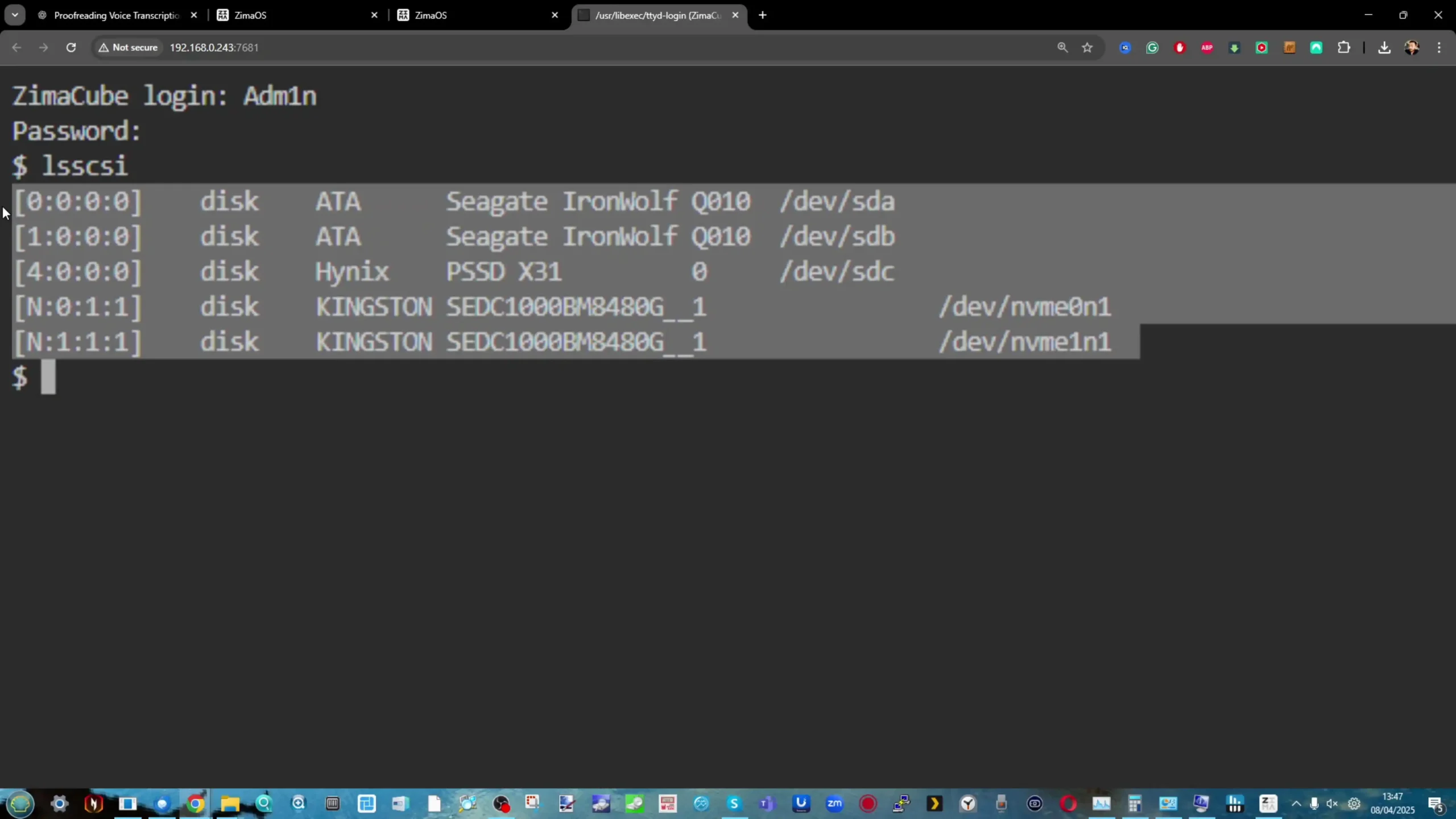
The lack of active cooling makes thermal planning essential for any serious workload. But overall, the ZimaBoard 2 feels polished and reliable, with a design philosophy that caters well to its core audience of DIY server builders and edge compute experimenters.
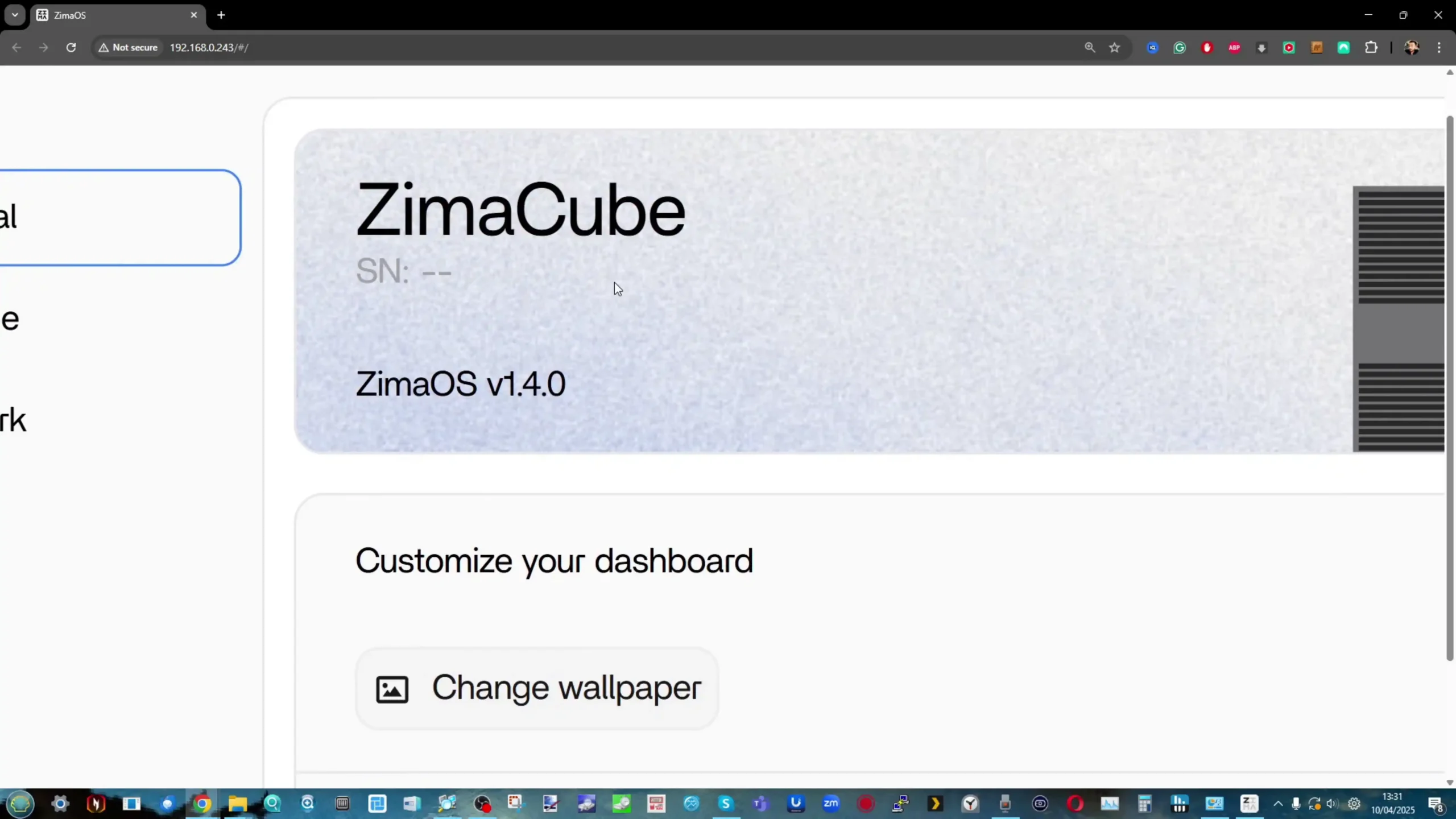
Zimaboard 2 Review – Software
ZimaBoard 2 ships with ZimaOS, a custom-built operating system from IceWhale that is based on CasaOS—a lightweight, open-source platform designed for simplicity and ease of deployment. ZimaOS retains the core principles of CasaOS but adds refinements tailored to the Zima ecosystem, particularly features that emerged during development of the more powerful ZimaCube. The out-of-the-box experience is beginner-friendly, offering an intuitive web dashboard called “LaunchPad,” which centralizes access to installed applications, system controls, and file management.
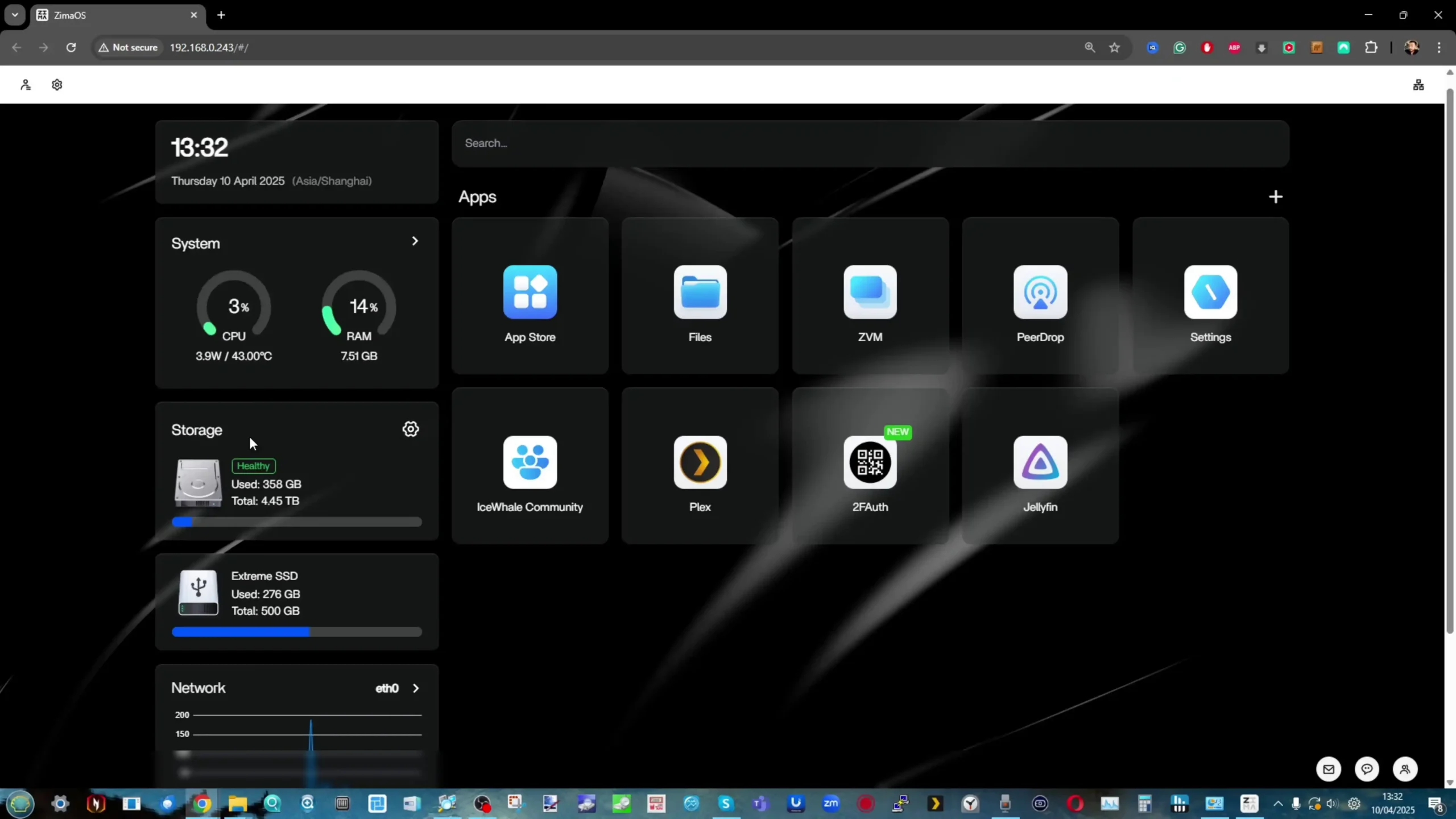
ZimaOS is pre-installed on the board’s eMMC storage, enabling immediate setup without requiring users to flash a drive or download additional software. Despite the modest resources of the ZimaBoard 2, the OS performs responsively, even with several services running in parallel. The interface is clean, albeit minimalistic, focusing on usability over deep customization.
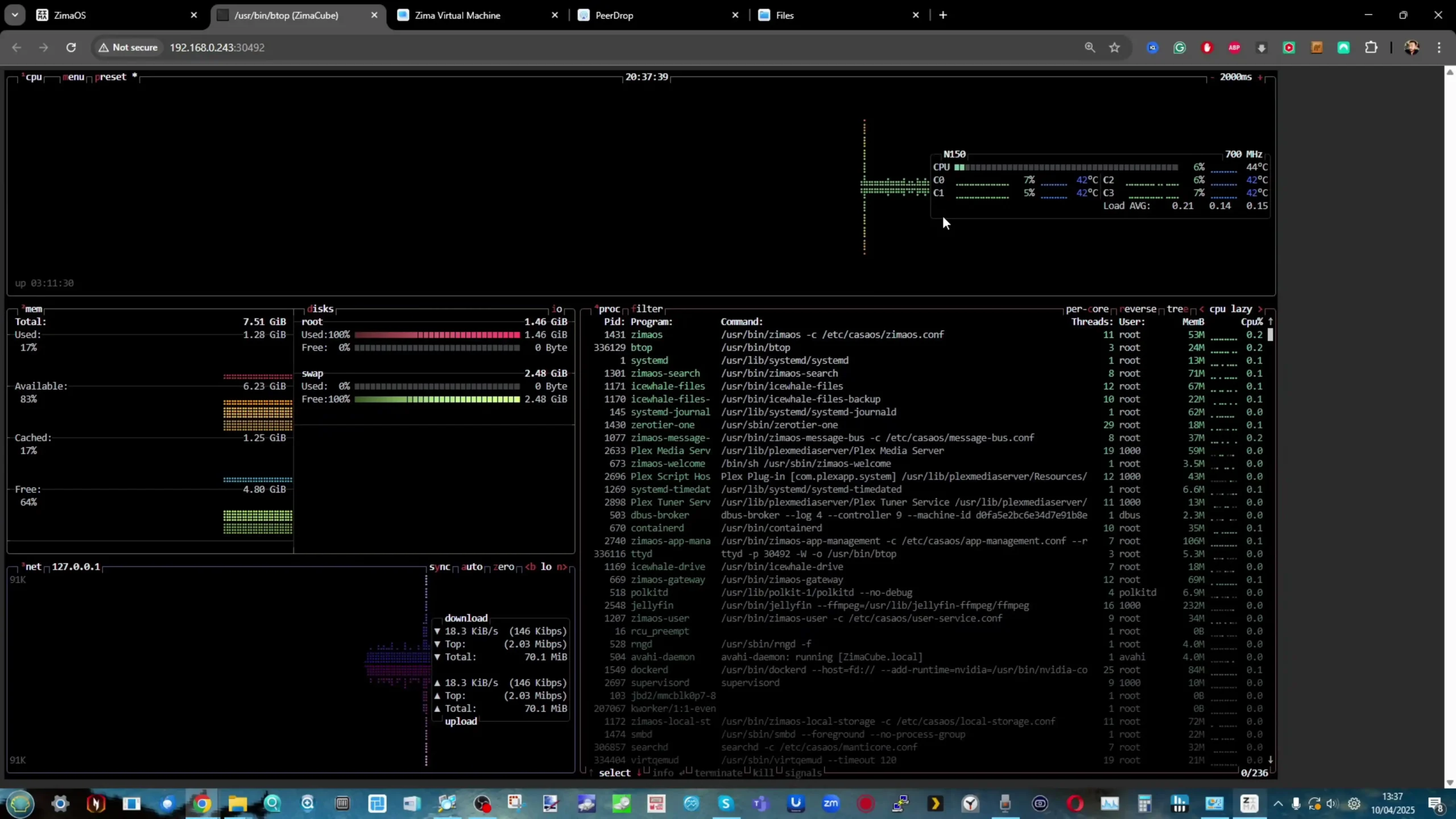
For users who are new to home servers or Docker deployments, the learning curve is surprisingly gentle. Though it lacks some of the granularity of more established platforms like OpenMediaVault or TrueNAS, it’s clear that IceWhale has designed ZimaOS to get users up and running quickly without sacrificing key functionality.
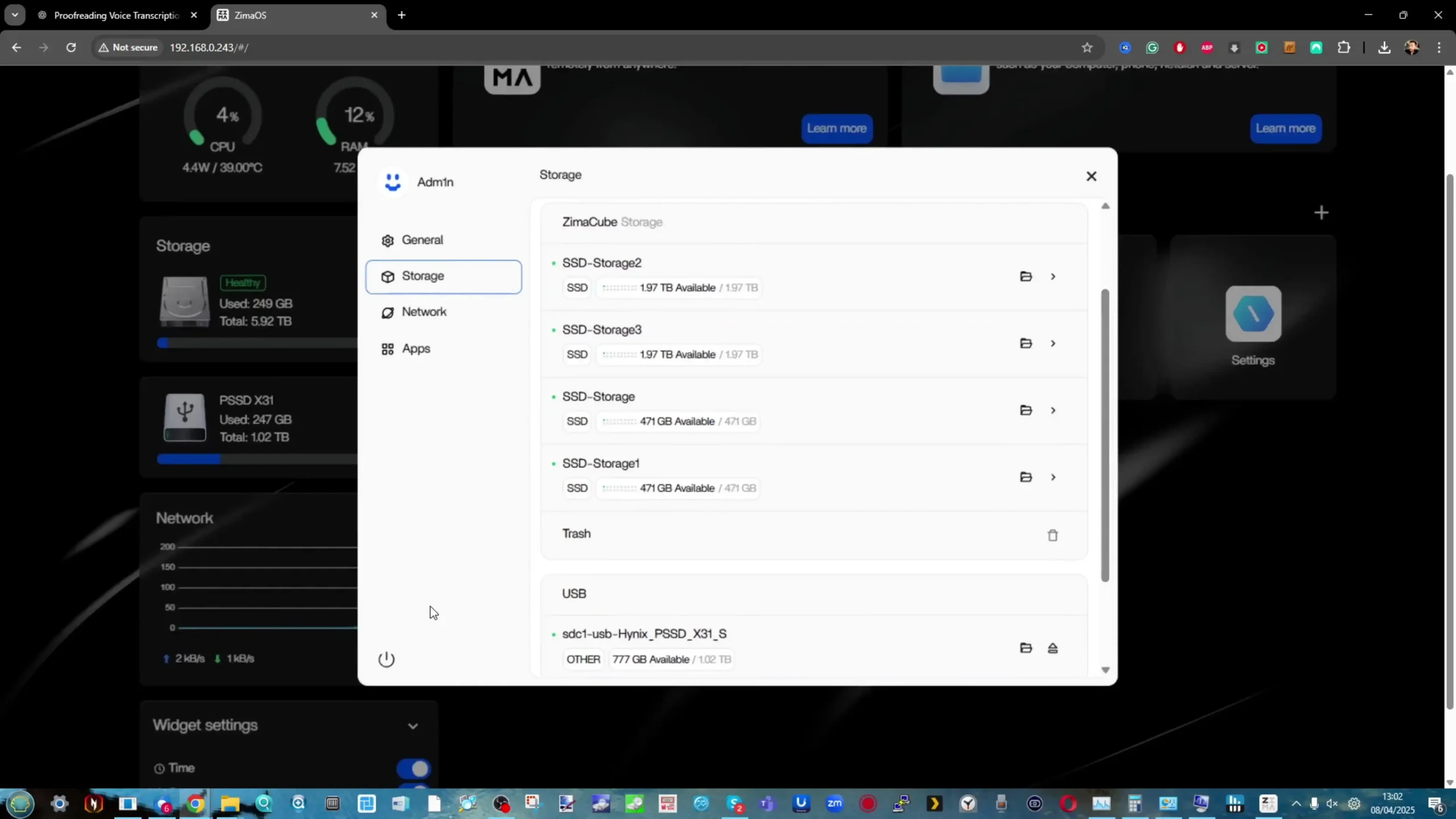
One of the more distinctive features of ZimaOS is its integrated App Store, which acts as a curated hub for Docker-based applications. Unlike traditional NAS interfaces that require command-line Docker commands or extensive Portainer configuration, ZimaOS simplifies deployment through one-click installation and automated environment setups.
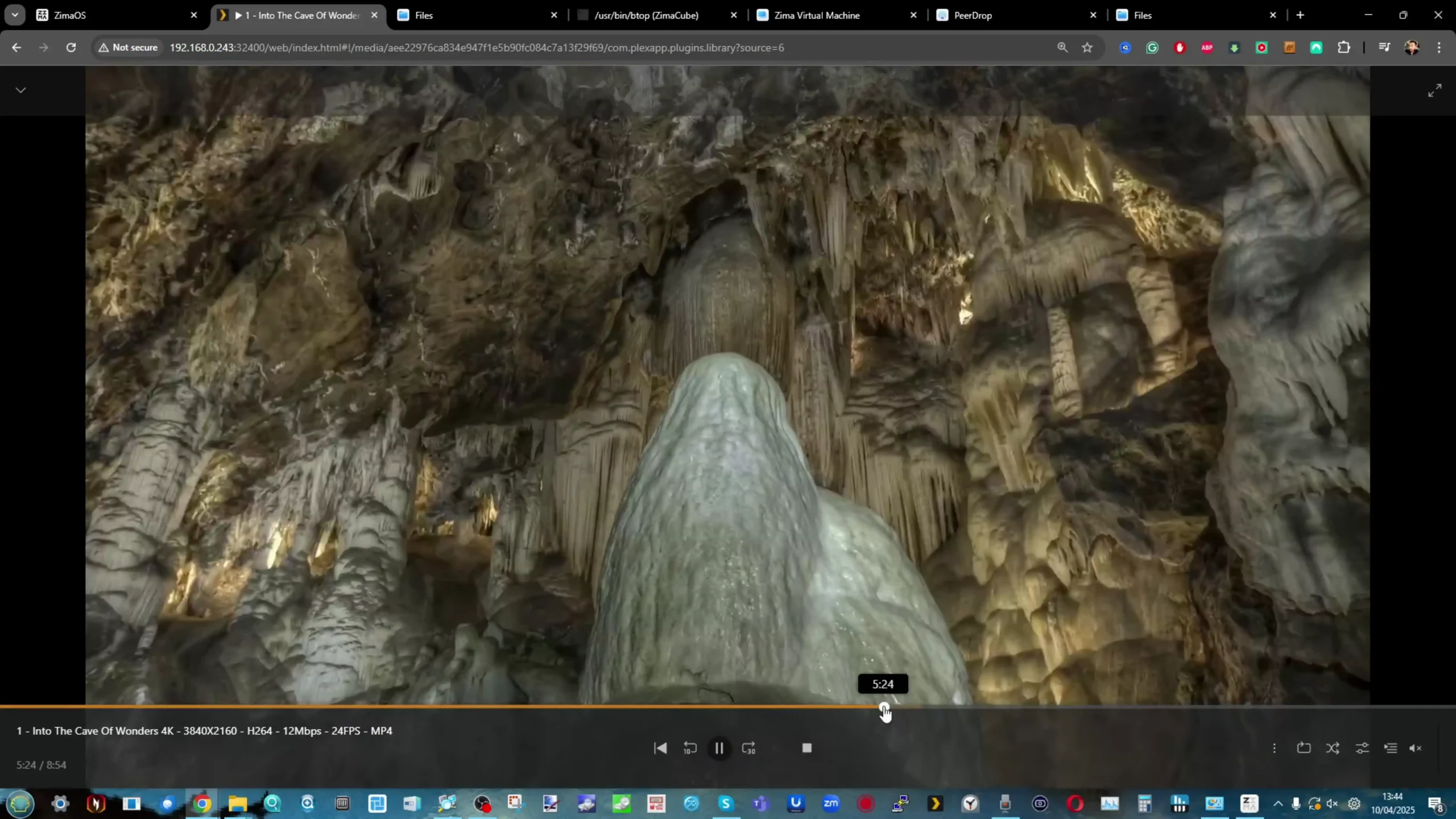
Popular applications like Plex, Jellyfin, Stable Diffusion, and more are available by default, with the option to add third-party sources for broader container variety. Behind the scenes, the system leverages containerization frameworks to handle resource isolation and volume mappings, but much of this complexity is hidden from the end user.

Application setup is further eased by pre-configured defaults such as port assignments, directory structures, and even PUID/PGID settings, reducing friction for non-technical users. For those with more experience, ZimaOS still allows you to tweak or override these settings manually. Notably, ZimaOS also includes a basic virtualization interface that supports downloading and running lightweight VMs using prebuilt images.
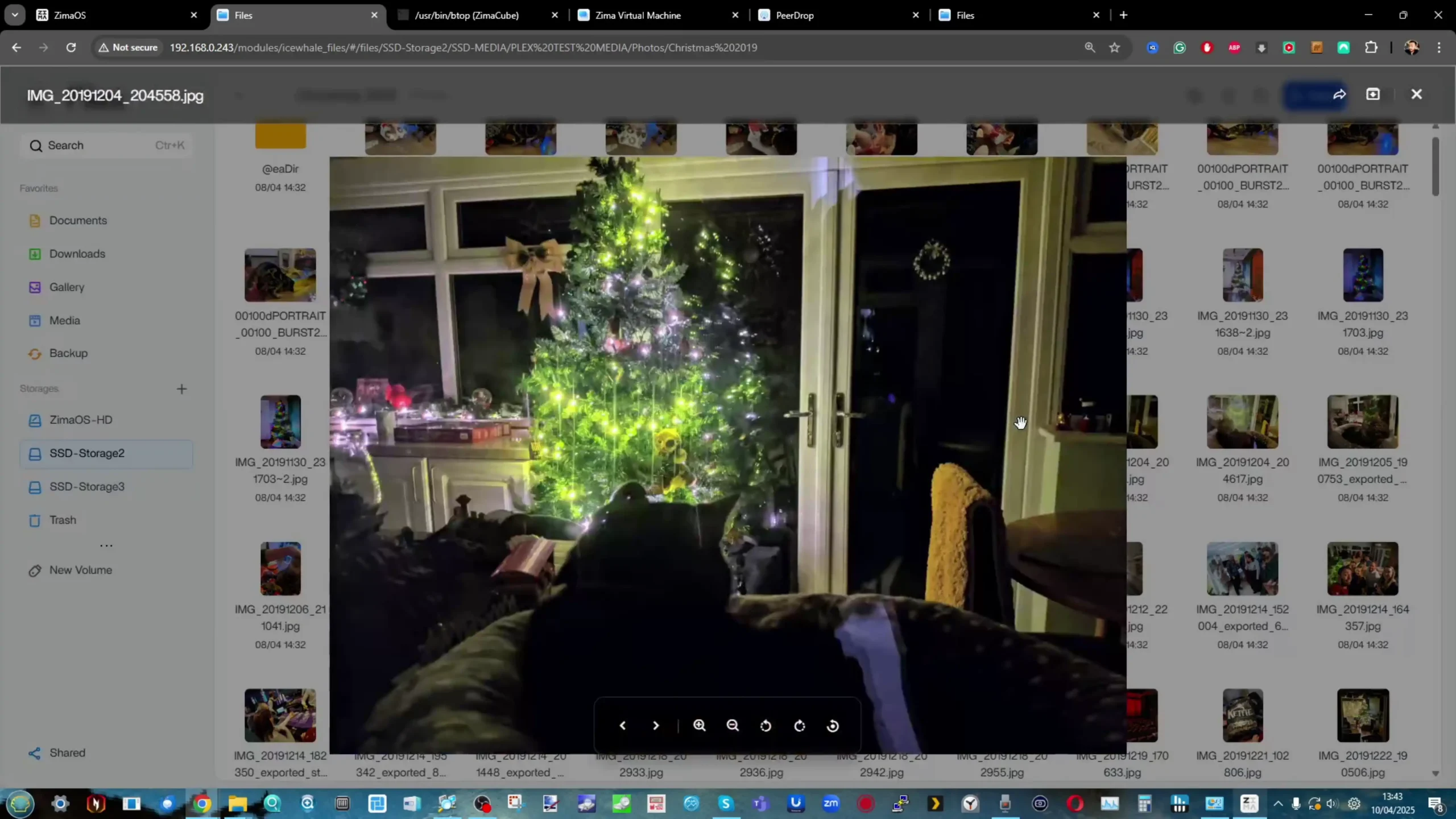
While this feature is better suited to the higher-specced ZimaCube due to memory and cooling constraints, its presence on the ZimaBoard 2 is still a nice touch and shows that the OS is aiming to grow into a more comprehensive platform. Overall, the application and container ecosystem here punches above its weight, especially considering the resource constraints of the board itself.
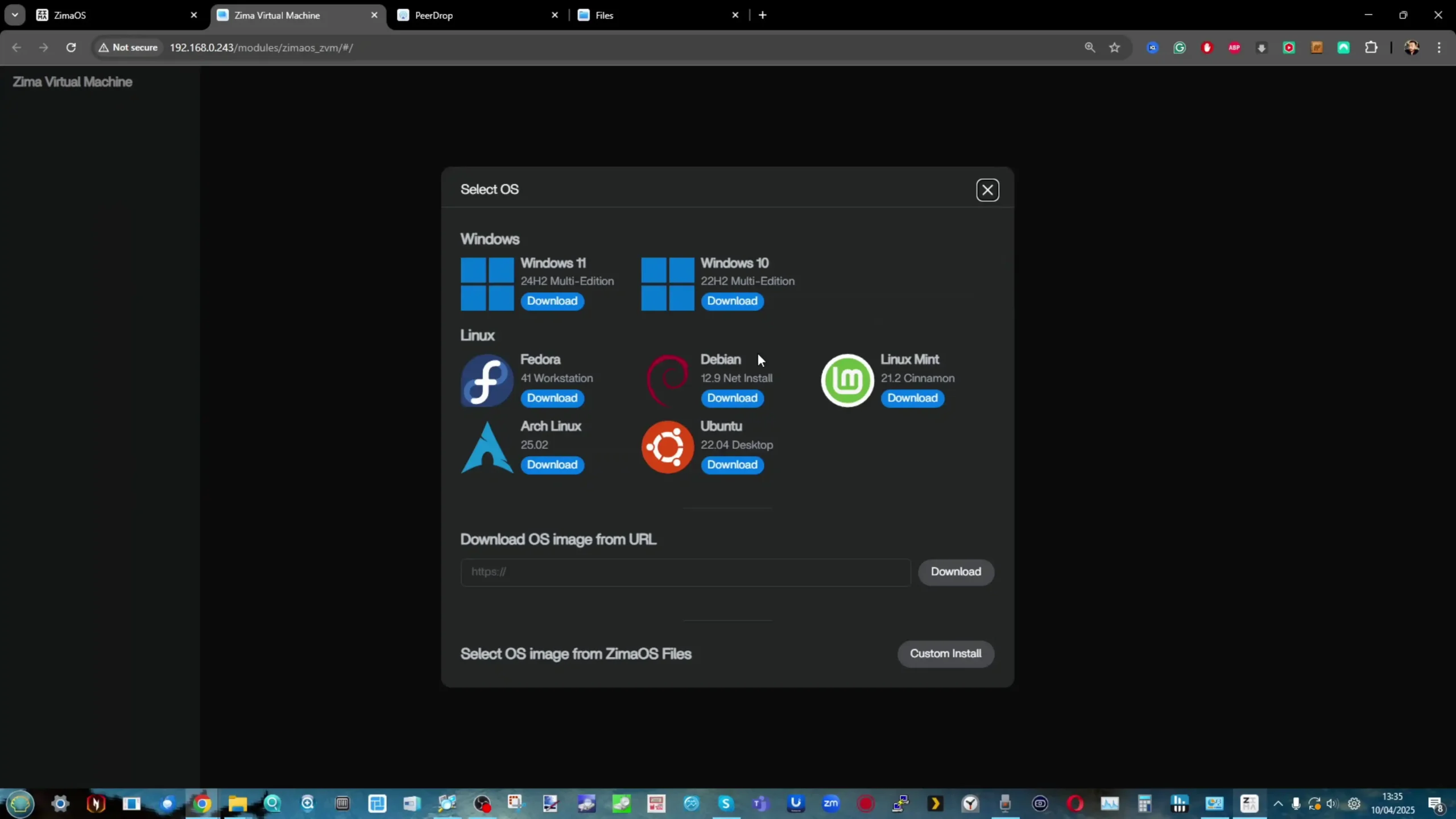
In terms of storage and file sharing, ZimaOS delivers a capable if somewhat minimal feature set that prioritizes simplicity over enterprise-style depth. Users can create RAID groups—a new feature compared to earlier CasaOS iterations—manage individual drives, and set up file-level sharing using standard protocols like SMB.
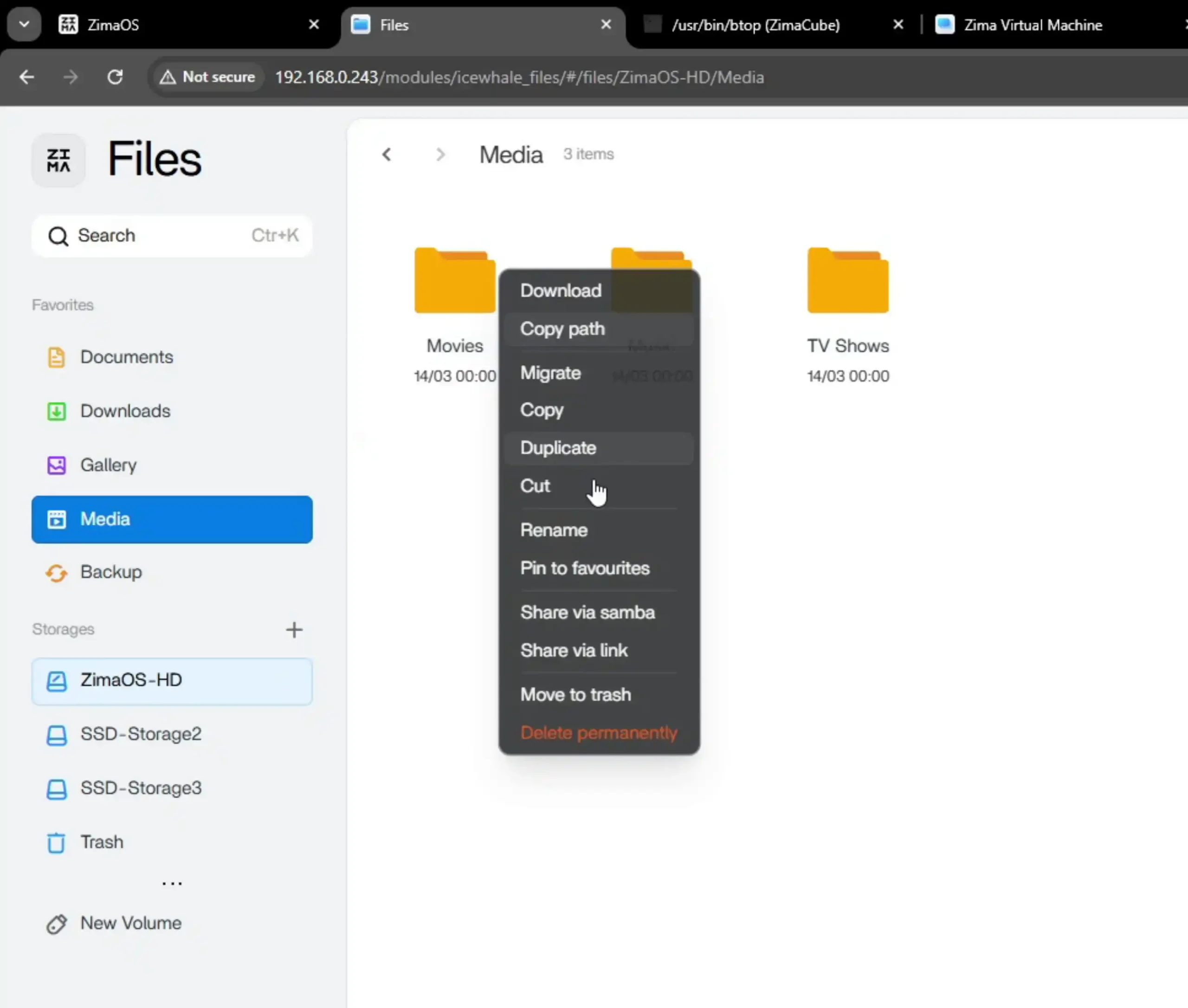
The file manager, accessible through the main dashboard, allows for browsing, copying, and sharing content in a familiar web-based interface. Integration with IceWhale’s own client tool enables a peer-to-peer feature called “peerdrop,” which links multiple Zima-based systems or client devices (like phones and laptops) for rapid syncing and data exchange.
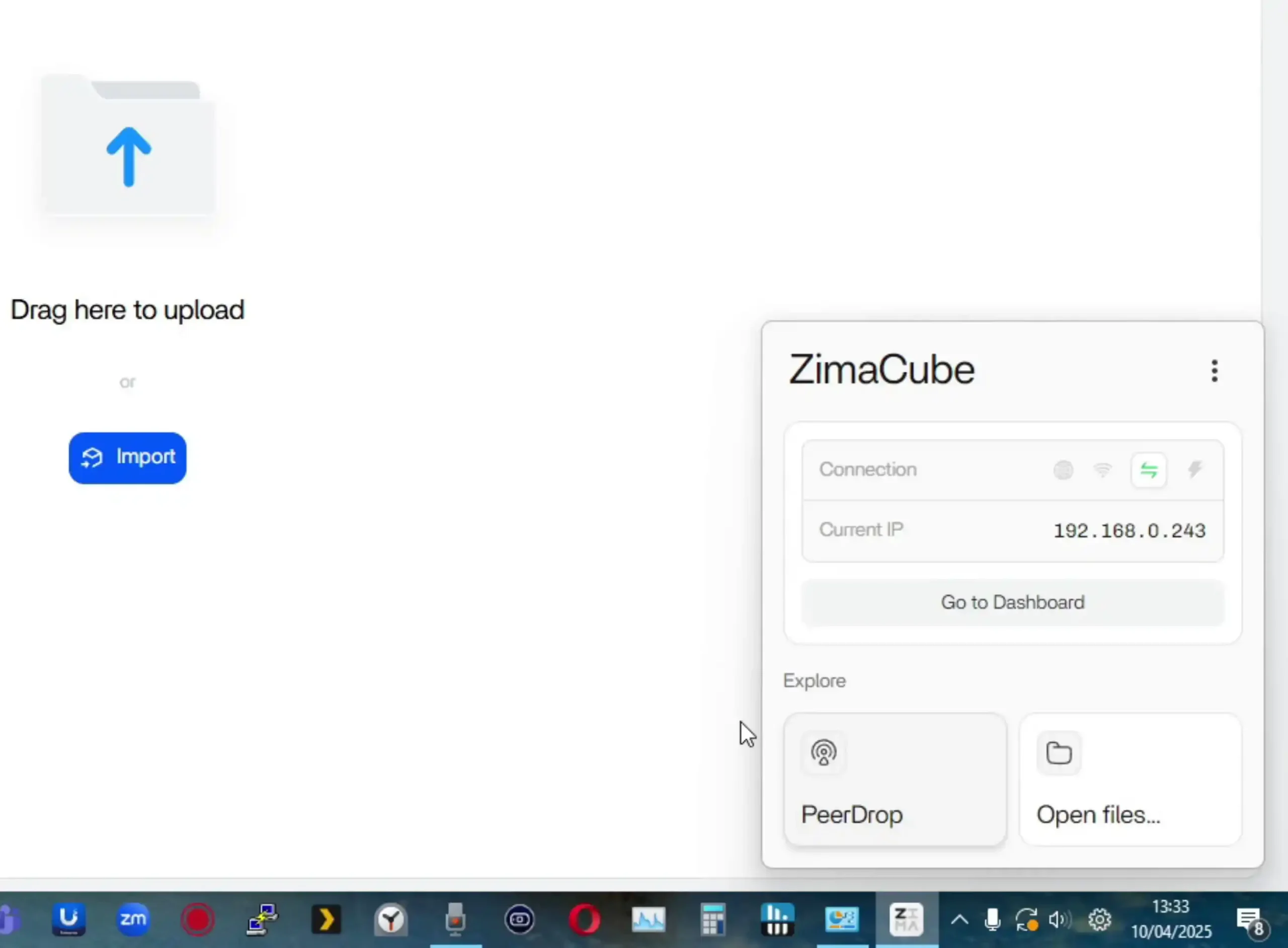
This is especially useful for users who want an easy method to upload media, backup devices, or move files between multiple systems on a local network. Remote access can be enabled through a simple relay-based mechanism, which generates shareable links for specific files or folders, complete with read/write controls. While more advanced access control, encryption, or user quotas are not present in this build, the essentials for home or small office use are here and function as expected.
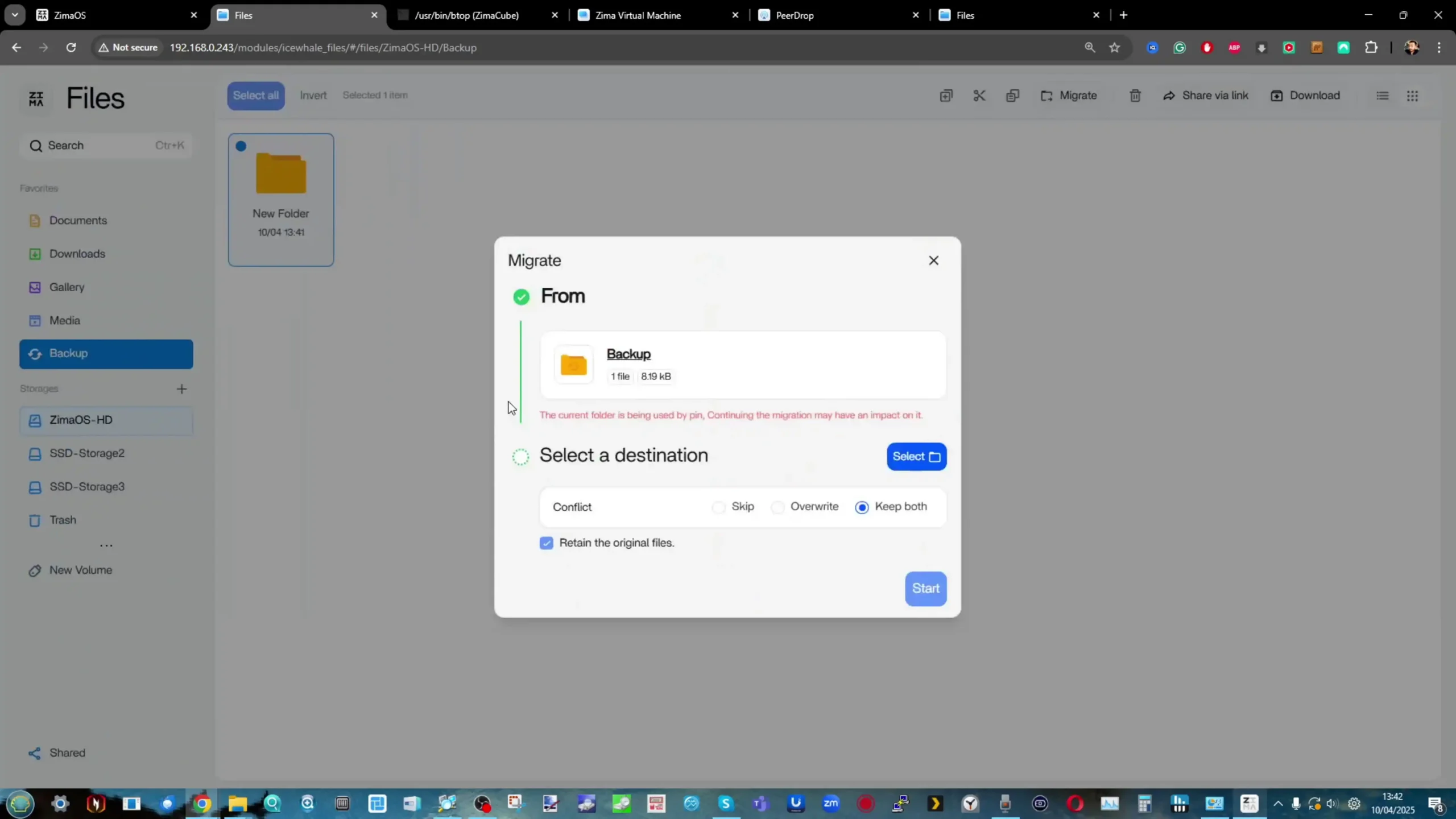
Cloud integration is also available, allowing the addition of third-party storage such as Google Drive or Dropbox for backup or syncing purposes. Though ZimaOS doesn’t try to replace full-fledged NAS operating systems in terms of depth, it successfully delivers the features most users will need, and its lightweight design ensures responsiveness even on modest hardware like the ZimaBoard 2.
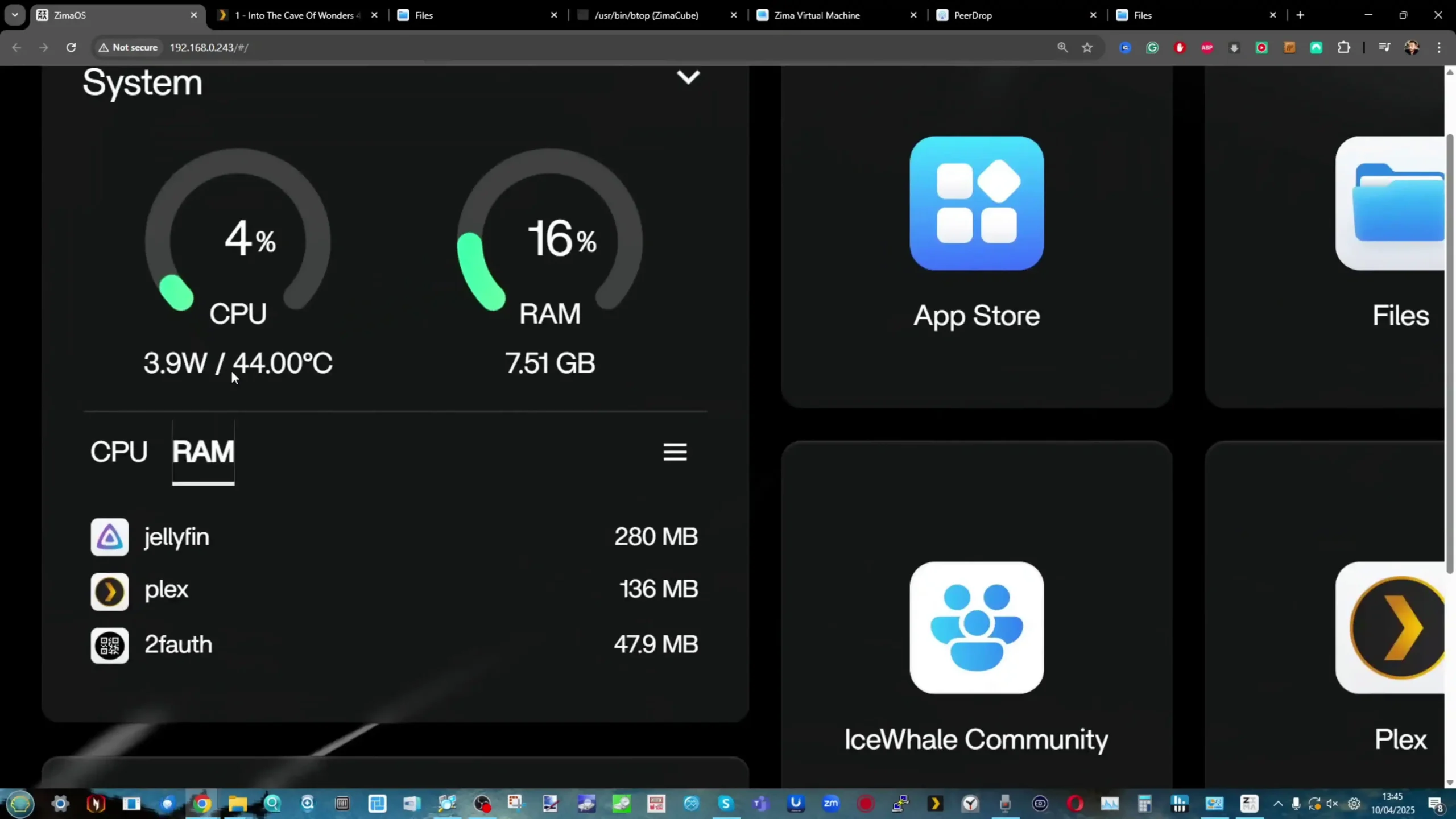
Zimaboard 2 Review – Conclusion & Verdict
The ZimaBoard 2 is a competent and thoughtfully assembled single-board server that builds meaningfully on IceWhale’s earlier efforts, especially the original ZimaBoard and the ZimaBlade. Its design clearly targets users who want more flexibility and performance than traditional ARM-based boards can offer, but who also value power efficiency, silence, and a small footprint. The use of an Intel N150 CPU, 8GB of LPDDR5x memory, dual 2.5GbE ports, and a PCIe 3.0 x4 slot makes it viable for a variety of home server roles—from basic NAS and smart home coordination to lightweight container hosting and local media streaming. Features like onboard SATA, USB 3.1, and a DisplayPort connection further add to its utility. However, there are hardware limitations that may affect long-term suitability for advanced deployments. The soldered RAM cannot be upgraded, and the internal eMMC storage, while useful for initial setup, is too slow for OS-level responsiveness in more demanding use cases. Passive cooling, while appreciated for silence, also imposes some thermal limitations depending on the deployment environment.
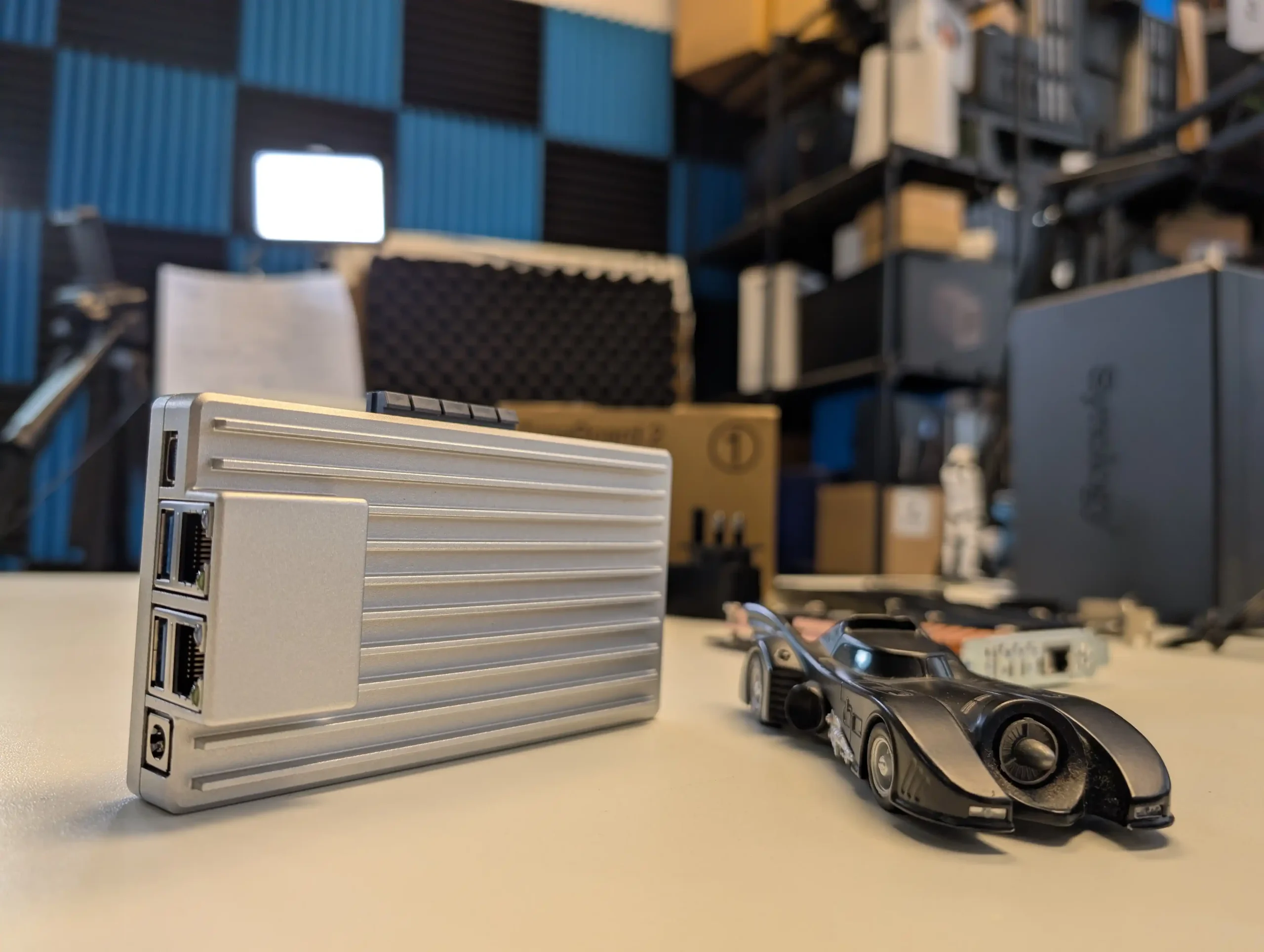
On the software side, ZimaOS offers a decent out-of-the-box experience that caters to users with minimal technical background. It handles core tasks like application deployment, file sharing, and system monitoring without requiring advanced configuration, and its Docker-based App Store simplifies access to popular tools. For more experienced users, the system supports third-party OS installation, which is likely how many will ultimately use the ZimaBoard 2. Still, as a bundled solution, ZimaOS has matured significantly and now presents itself as a lightweight, capable, and non-intrusive platform for those who prefer to get started immediately. In the broader context of DIY server hardware, ZimaBoard 2 occupies a middle ground: more powerful and modular than Raspberry Pi-class systems, yet more constrained than full x86 mini PCs or enthusiast-grade NAS hardware. For those who understand and accept these trade-offs, and are willing to plan around its limitations, the ZimaBoard 2 offers a reliable and flexible foundation for compact, energy-efficient computing at the edge.
| PROs of the Zimaboard 2 | CONs of the Zimaboard 2 |
|
|
NOTE – You can visit the Zimaboard 2 Crowdfunding Page (live from 10:30AM ET 22nd April 2025) by clicking the banner below. The entry price for early backers is $169, but that will revert to $179 (and $239 for a scaled-up storage and memory version). I DO NOT receive any kind of affiliate commission or sponsorship for this review (and this review, like all reviews at NASCompares, was done without the brand in question’s interference or input). You can use the link HERE to see the campaign for yourself and/or click the banner below:
📧 SUBSCRIBE TO OUR NEWSLETTER 🔔🔒 Join Inner Circle
Get an alert every time something gets added to this specific article!
This description contains links to Amazon. These links will take you to some of the products mentioned in today's content. As an Amazon Associate, I earn from qualifying purchases. Visit the NASCompares Deal Finder to find the best place to buy this device in your region, based on Service, Support and Reputation - Just Search for your NAS Drive in the Box Below
Need Advice on Data Storage from an Expert?
Finally, for free advice about your setup, just leave a message in the comments below here at NASCompares.com and we will get back to you. Need Help?
Where possible (and where appropriate) please provide as much information about your requirements, as then I can arrange the best answer and solution to your needs. Do not worry about your e-mail address being required, it will NOT be used in a mailing list and will NOT be used in any way other than to respond to your enquiry.
Need Help?
Where possible (and where appropriate) please provide as much information about your requirements, as then I can arrange the best answer and solution to your needs. Do not worry about your e-mail address being required, it will NOT be used in a mailing list and will NOT be used in any way other than to respond to your enquiry.

|
 |
NEW UGREEN DXP4800 PRO and DXP4800S NAS REVEALED
NanoKVM Pro Review - SO, SO CLOSE TO PERFECT...
Jonsbo N6 DIY NAS Case - NINE BAYS????
New UnifyDrive UP6 INSANE NAS + UC450 Pro and UC250 NAS Revealed
I VISITED A MINI PC FACTORY - Inside Beelink HQ
Visiting Terramaster's HQ in China - How Do They Work and Do They Deserve Your Data?
Access content via Patreon or KO-FI





Discover more from NAS Compares
Subscribe to get the latest posts sent to your email.


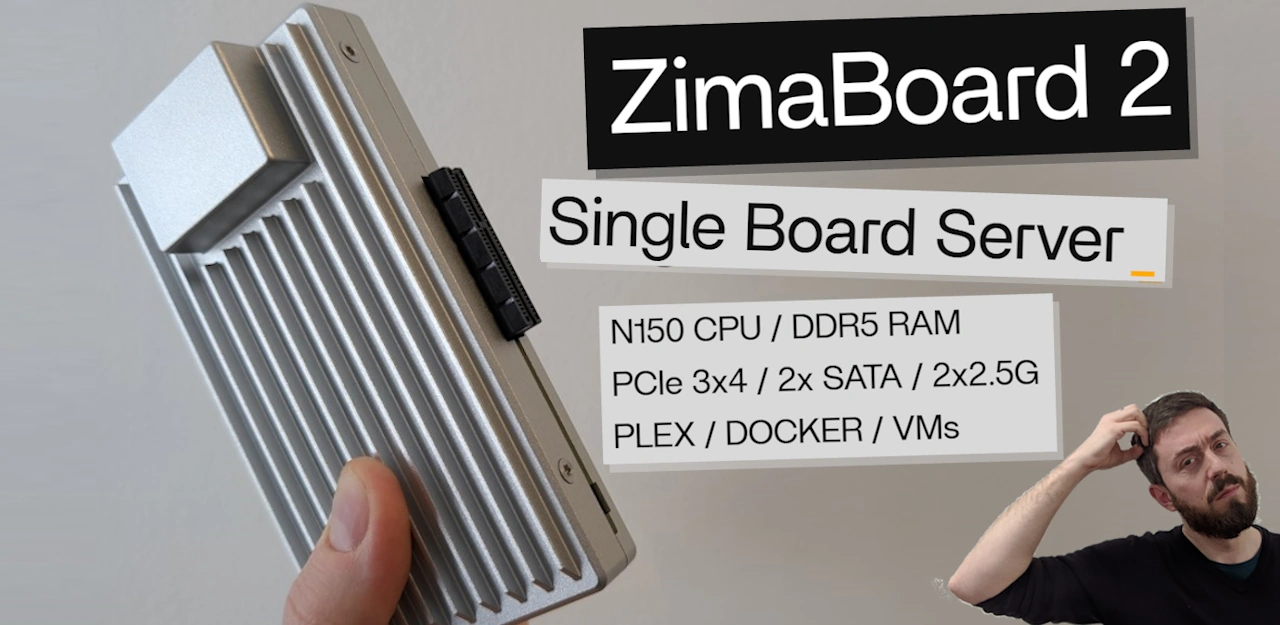
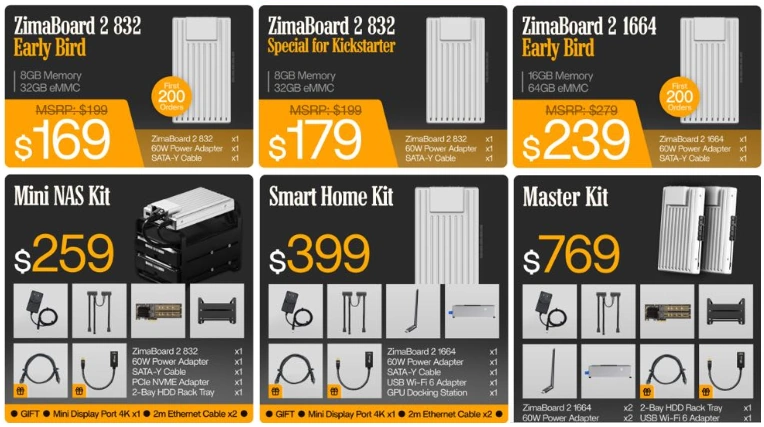



No usb drive spindown function yet. So I still wait
REPLY ON YOUTUBE
Like all this crap, looks all neat and tidy until you set it up then it looks like a dogs breakfast….. will its run excel? Lol
REPLY ON YOUTUBE
I wish icewhale would add an attachment point to secure pcie devices better
REPLY ON YOUTUBE
Looked up that Monica app its basically a contacts and reminder page for family allowing you to note and set reminders about family info i thought it was pretty cool look down page it gets good reviews with alzheimer aspergers patients…. and introverts… i feel attacked
TLDR – Found cool app now i feel attacked lmao
REPLY ON YOUTUBE
Klugy and messy…. dangling connectors and crap..
REPLY ON YOUTUBE
Those janky zooms are annoying.
REPLY ON YOUTUBE
I’d really love to see you test this loaded down with storage, functioning as a NAS. Like, 2 SATA SSDs, maybe with a 4 or 5 slot m.2 card in the PCI-E slot (fully populated), and the USB ports used with SATA or m.2 adapters. Maybe use one of the USB for a cooling fan. I’ve seen others on youtube complain that the zimaboard 2 gots hot, but nobody’s tested it with a fan or filled to the brim with storage
REPLY ON YOUTUBE
❤ Can it operate high 4K in plex?
Sorry for my Basic question, I’m trying to grow like most of you! ????
REPLY ON YOUTUBE
I really like the casa OS ecosystem.
If my only goal was to have jellyfin and an SMB share that would be such an amazing way to go about it. Really.
Proxmox is too addictive though. Snapshots, lxc containers.
Just being able to whip up any kind of VM or LXC container for any kind of purpose is so useful.
REPLY ON YOUTUBE
Wow, the ZimaBoard 2 looks intriguing, but I noticed something on the Kickstarter page. Most of the images are rendered or post-processed. There are very few actual product photos, and in those, the ZimaBoard 2 isn’t even powered on—no indicator lights, active interfaces, nada.
So here’s my question: Are we just looking at non-functional prototypes or static models for heatsink demos? It’s kinda worrying… ????
Also, for something this technical, I was expecting to see some hard data on thermal design, power consumption, and performance stability under stress. You know, like 48-hour continuous load tests with CPU utilization over 90% and full-bandwidth network transmission. Real engineer stuff.
It’d be great if future test videos included:
-Temperature variation curves of the exterior surfaces
-Core frequency stability
-System anomaly rate stats (like crashes, network interruptions, reboots)
If IceWhale haven’t done this yet, can you let us know when we can see some stress test results?
REPLY ON YOUTUBE
The design look clean and nice, however, I do not know who going to buy it.
REPLY ON YOUTUBE
unraid wouldn’t overwrite the drive since it runs from the USB… not a ssd drive… so you merely don’t use the built in drive, boot from USB and done…
what is that dual m.2 + 10gig netcard ? got a link for it?
REPLY ON YOUTUBE
I like my zima blade. But i cant stand being limited by a vendor. Due to ram cap = 0 chance of zimaboard 2 purchase…
REPLY ON YOUTUBE
Shame they went with N150. No native SATA controllers.
REPLY ON YOUTUBE
A homelab device with non replaceable ram and storage. Yeah, what about nope?
REPLY ON YOUTUBE
Nuxbox 3 pro by GMKTec better specs and is cheaper.
REPLY ON YOUTUBE
I am a Docker Guy and i think the implementation in CasaOS is great. I think the Performance Level option does nothing and the Network option seams confusing. But the container naming and the docker info system works great. I have NetData running and it can see how a Container performs and interacts with the system, and you can differ them if you name your container in the option on the bottom, otherwise you end up with the container ID who can’t be seen easily.
But for the Performance Level option, i can’t really tell if this works. My system is too powerful and the performance impact of my container too little to see if this does something.
REPLY ON YOUTUBE
For me. If I would start again from zero as beginner and need a small server, i would still buy a J5040-itx board because it has more features and costs less with comparable performance. The N100 boards or other N CPUs are single Channel ram, which hurts performance even if the ram is double the speed.
I know the J5040 does support only 8GB, but i had a system with 16GB in the past and some people are able to cram 64GB into this systems. Also the iGPU of the J5040 or J CPUs in general are pretty powerful compared to the N series CPUs.
I know the J series CPUs are old and outdated but if you use this as a small Home Server this gonna be fine. Even a celleron CPU from 2007 is more than enough for your first steps. i used in the past netbooks with dual-core cellerons with 16gb eMMC inside and only 2gb ram. They are not great but they worked and you got them cheap used. The best part of using a laptop is you get a terminal and a UPS for free if you know what i mean.
But if you want to be a bit Flexible a J5040 is perfect, they are Cheap, Fanless, only x1 PCIE 2.0 port, 4x 3.2 Gen1 USB, 3.2ghz 4 core pentium J5040 with VT and C-states, HDMI, VGA and DVI Digital and Analog. 4x sata3 6 gbit ports.
Yes it is an older CPU and the 10W Power is dynamically shared between iGPU and CPU but for a Server this doesn’t mater much. You can even transcode in hardware h264 over the iGPU. Im my eyes a perfect little server. And if you need more power, buy a used Office PC and stuff a cheap RX540 oder RX560 in it and you can do some AI stuff too and you have most likely more than 4 cores, but this would use more than 3W to 7W idle and 17W peak. Maybe in the range of 35W to 150W, but this PC have more Power you will ever need for Home use.
I mean yeah i running a Dell R630 at home but i have multiple game servers running and other services about 40 people are constantly connected to my machine and sometimes 100 people are connectet to my system. i could try clustering but this is way harder as running a singular multi socket system and in this way it’s more efficient. My system is running with 30% to 70% load over the day and using 150W to 270W depending on the load.
REPLY ON YOUTUBE
casaOS is running on my Server too. I like it very much, but it has some problems, especial if you’re using a Raid controller with multiple virtual drives. This has to do how Linux manages devices. you can see the volume on the second Vdrive, but there are no SMART and casaOS can’t differentiate them because both have the same DeviceID and DevicePath, even Linux can differentiate them /dev/sda /dev/sdb and so on, isn’t enough for CasaOS to work Properly. Maybe this changes in the future because theoretical some SCSI-Sata controler are able to do hardware raid even with multiple vdrives. Not every Mainboard manufacturer give you the option in the bios to use RAID. Most of the time this is a pseudo raid where one core of your CPU or your Southbridge/Chipset CPU is used in the background to do parity.
REPLY ON YOUTUBE
I’ve ordered mine. Looking forward to more videos on the zimaboard 2.
REPLY ON YOUTUBE
????????????????????
REPLY ON YOUTUBE
I’ve been running the first ZimaBoard as my home Router using OPNsense for the longest time. Only recently did I switch to something with 2.5g and 10g ports. I have nothing but good things to say about it, and will repurpose it as an “off-site mini nas” I’ll chuck into some corner at my parents. I never ran CasaOS, always something specific.
I can confirm that the temperatures also for the first one (also fully passive, same TDP) were in the los 50s °C for a mostly idle(ish) CPU. Considering the CPU has the same TDP, that checks out. Pointing even a small and/or slow fan at it will of course drop those temps significantly, like all purely passive cooling solutions.
What interest me is if the bifurcation options are still as good as they were on the first one. You could slice up the x4 connector any way you wanted basically, and have it put out 4 x1 lanes or 2 x2. I don’t remember every possbile combination, but that is one of the things that gave this device its versatility.
As for the downsides: There’s a 16 GB version that also comes with more eMMC (64 GB), but it’s 70$ more at 250$. That’s starting to be a bit steep for what it is, and the non-upgradable and frankly even at that spec still severely insufficient amount of RAM.
My current home router (which replaced my first zimaboard) is running OPNsense virtualized on a proxmox base system, and runs other network related services alongside it on 32 GB RAM on an N100 CPU. It’s plenty CPU for those things, and memery is still the limiting factor for me. I might just go to 48 GB.
REPLY ON YOUTUBE
If it supported PoE power input and had standard HDMI connector, I would totally get one.
REPLY ON YOUTUBE
Without ECC memory to the CPU it is going to be useless as a server. The radiator fins could have been risen to the height of the ethernet connector for a better cooling and a longer lifespan of the components.
REPLY ON YOUTUBE
Come on Zima….make a 16GB or 32GB model.
For the fun of it…make a 64GB model.
I feel like we are not really moving forward in the IT space, but are being intentionally kept at a point.
REPLY ON YOUTUBE
Can a PCIe card be plugged in w/o removing its mounting bracket, or does that clearance annoyance still exist?
REPLY ON YOUTUBE
I don’t get what all the fuss is about. It’s not much better or cheaper than other options.
REPLY ON YOUTUBE
With regard to cooling, maybe remove the original case add a small 5 volt fan on a heat sink and print a case for it.
REPLY ON YOUTUBE
Just a pitty not be based on newer N305 or N355
REPLY ON YOUTUBE
is that…. literally a single DRAM package?
I get that the N series already has absolutely piss poor memory bandwidth from only being capable of a single memory channel, but come on.
Systems that used these CPUs were already primarily limited by their memory bandwidth when using an actual dimm/sodimm.
Icewhale is just…. completely unserious imo. Their software is atrocious, and their hardware isn’t much better.
REPLY ON YOUTUBE
You said mini hdmi but it more look like a mini displayport.
REPLY ON YOUTUBE
Quick note, not sure if they didn’t prep you with this or if you missed it, but there’s also a 16GB of RAM modem with 64GB of eMMC.
I’ve got a trio of Zimaboards and a Zimacube Pro. Two of the Zimas run pfSense (one for a LAN party, one as a backup for my home one) and one that I plan on using just to mess around with at some point in the future.
I’ll probably pick up a couple of these for an upgrade to the LAN party router at some point, and grab a second of those to mess around with as well. But other than as something I can easily replace, I would never rely on eMMC memory for storage.
REPLY ON YOUTUBE
I used the original for a while but the biggest problem was storage and processor, this is very underwhelming, even a pi has an m.2 now , to use the 4 core n series again while the world has moved on , this may have been acceptable in lockdown but now it’s far behind the curve Qualcomm QCM6490v based. Sbcs are out this year this quarter and other risk base or amd z2 cards are as well , having something alderlake based yet again limits upgrades as a plex or jellyfin sever using the 1ghz graphics that roots ard from 5 years ago is deeply flawed, it’s gone from a curiosity neesh market nas possibility and sim-ly fixed the design glas of pci oversized cards they should have gone z2 I feel people will be deeply disappointed in this release it is still pure entry performance that many wills feel let down it is effectively 2011 performance pc . It’s uses as a kiosk or 15w low power os with massive limitations
REPLY ON YOUTUBE
I’m good with my MS01, thanks.
REPLY ON YOUTUBE
I’ve been using a Zimablade for a few months now, with 2 use cases :
– hard drive testing and maintenance using Spinrite
– small virtualization host using Proxmox, for some basic services (pi-hole, WireGuard, and LibreNMS)
I’m wondering if the zimaboard v2 can boot in CSM mode, because SpinRite does not support UEFI mode for now.
Some features I wish were integrated into Zimaboard v2 are replaceable storage and ram : software tend to bloat over time, and flash memory storage also has a limited write endurance. Failure of one of these parts means the board is almost dead (not totally true for storage thanks to USB, SATA and PCI-E but you get the point). And if the board itself dies, boot storage and ram cannot be salvaged. That’s some concern to me. Oh, and why no USB-C power input ?
Otherwise, it looks like a very welcome upgrade to their main product !
REPLY ON YOUTUBE
I need help.. Transferring files from asustor NAS to uGreen NAS… Is there an app that can be downloaded via Docker that can do this?
REPLY ON YOUTUBE
It doesn’t warrant the amount of glazing you did. no m.2 so you either have to rely on emmc or have drives literally dangling. A dangling PCIe card too. stupid mini dp port instead of HDMI. Can’t be powered by the usb c port. No wifi. limited RAM. There are waay better options. I guess when you get free stuff you are more tolerant of shortcomings.
REPLY ON YOUTUBE
It is unfortunate that for the price that they’re asking, it puts it out of the efficient $/(performance/Watt) metric.
If it weren’t for that, it would be an interesting buy.
REPLY ON YOUTUBE
Can you still install ZimaOS on top of Proxmox like you could with CasaOS? And i don’t mean as a VM, I mesn actually using Proxmox as the base for it
REPLY ON YOUTUBE
Wow I was just waiting for another crowdfunded piece of crap — you priorities are a bit off these days –
REPLY ON YOUTUBE
I been using a ZimaBlade for about a year to host my plex server instead of letting my Synology do that, and it has been great so far!
A big issue I had, was that it came with a default SSH username and password, nowhere in the little documentation that it gives out to people says that. I set up my username and password, but there is still an “admin/casaos” account with full access to everything. Anyone that has access to your network could easily take over it. Even changing the password wasn’t as simple (I’m not a linux person, so I had to find the commands/instructions online). This is something that should be noted for anyone getting one, I feel its a security risk that they do not mitigate very well.
REPLY ON YOUTUBE
Better off with a hp prodesk, more power and quite a bit cheaper
REPLY ON YOUTUBE
oh no…. only 8gb of ram? that’s not good
REPLY ON YOUTUBE
Good product, but too much limitation, i still prefer odroid or asrock n100dc itx
REPLY ON YOUTUBE
the only way I would trust this thing on my home network would be too overwrite the internal storage
REPLY ON YOUTUBE
8gb is a dealbreaker. Such a shame, other than that it’s pretty much perfect.
REPLY ON YOUTUBE
Still looks like a gimic product. Maybe for a dev its wortha look to test stuff with pcie or smth, but besides that this devices even has miniDP which suuuucks, Type C everything pls.
Niche device for a niche userbase.
REPLY ON YOUTUBE
Please tell them to make this POE powered! At least when external pcie is not connected.
Also where’s a first party rack mount kit?
REPLY ON YOUTUBE
The only pro im seeing over a min pc is the pcie and sata ports. I’m not a huge fan of soldered anything, and for your information, 98% of Chrome books can be had for 8-20 bucks and be loaded with linux or even windows, not as powerful but most are passive cooled and some motherboards are very small rectangle slightly bigger than a raspberry pie and for the price its very good value
REPLY ON YOUTUBE
No ECC support though, how can we get a N150 class chip with ECC?
REPLY ON YOUTUBE
Also? that’s mini Displayport, not HDMI. Same as the Zimaboard 1.0. Good overview with some errors for you to fix.
REPLY ON YOUTUBE
не понимаю для чего это устройство когда есть аналоги не уступающие по мощности и дешевле.
REPLY ON YOUTUBE
You should pronounce it Zeema, like alpha and omega. Otherwise you basically have a server board for pensioners, Zimaframe lol
REPLY ON YOUTUBE
Damn i was hoping it was 16gb i have the original and am using 8gb which limits me from fully migrating off of my old unraid server
REPLY ON YOUTUBE
Did they fix the clearance issues on the zima 1 and blade, where the “shield” of a pcie card wouldn’t fit? I see you only show pcie cards where the shield is removed ????
REPLY ON YOUTUBE
Of the Zimadale Zimadome?
REPLY ON YOUTUBE
I put money down on the 16/64 version when it went live today.
REPLY ON YOUTUBE
0:19 they are kind of ice ??? I. This regards?
Anyone make out what is said there?
REPLY ON YOUTUBE
I’m really excited to see these. They address a *lot* of the issues highlighted with the Zimaboard 1. The N150 in particular is a huge jump from the N3xxx series Celerons they used previously.
One disappointment: no obvious way to add PoE power, which seems like it would be ideal for a cluster of these. If it was powered over real USB-C, you could use a PoE+ or PoE++ to USB-C power converter.
One major issue, which you highlighted: soldered, limited RAM. Yes, you can pay more for soldered 16 GiB, but still, soldered RAM kills it for a lot of people, and bricks it if the RAM fails. Plus, the N150 can almost certainly support more than 16 GiB, even if not officially. I understand why manufacturers want to use that form factor for the RAM vs a SODIMM–the cost- and space-savings are real–but for such a … labby … product (this is not a mainstream mini PC), I’d have loved to see a socket for this form factor of RAM, so you could source your own upgrade chip and yolo it if that’s your thing.
Likewise, eMMC presents issues–Devs for certain projects, like Proxmox, for example, do not necessarily support installing PVE on eMMC. So, if you go that way, you’re running an unsupported hardware config out of the box–on what is otherwise a pretty standard N150 platform in a tiny package. And that’s before considering the write endurance and performance. Running your OS off a high-endurance USB stick might be better, which is not ideal. Why not 2230 NVME bottlenecked to Gen 2×1 (basically SATA SSD speed, which is fast enough for an OS drive) to control heat?
The RAM and storage limitations aren’t an issue with the intended first party OS in the intended use case, but will be issues when trying to maximize the product lifetime (which would normally be done with updates to storage and RAM). To a lesser extent, the soldered components limit the flexibility of just doing weird stuff with it. 😛
But I’m very much pleased to see IceWhale going in a direction so responsive to feedback on their previous products.
REPLY ON YOUTUBE
I wish micro-HDMI would go away. Mini-HDMI is small enough.
REPLY ON YOUTUBE
the cwwk board looks like a better option if you need the pcie breakout
REPLY ON YOUTUBE
btop as the default resource monitor is actually awesome lol
REPLY ON YOUTUBE
Passively cooled N150. Hmmm. The missed opportunity to add 80mm fan standoff mounts and a PWM fan header on the side makes me doubt as to whether the Icewhale designers even bother to push the device to the limits that its marketing seems to hint at. I guess you could get janky with a pair of rubber bands and a 3-pin fan to USB adapter.
REPLY ON YOUTUBE
I love products from them. But this sounds like sponsored.
REPLY ON YOUTUBE
Automated installs on ZimaOS are problematic at best.
REPLY ON YOUTUBE
Why can’t we have 16GB? For a single board VM host more ram the better.
REPLY ON YOUTUBE
agree that the 16GB version is really the starting point for something like this. also would be really nice if everyone could stop pretending it makes sense to put anything lower than 10G networking in these things anymore. maybe the market is glutted with 2.5G controllers, idk, but 10G opens up *so* many more use cases, and I doubt most people want to turn these into routers with 2x 2.5G connections, which would be the main reason to have two. as it is you have to go with a combo card in the PCIe slot or dedicated NIC, and that’s sorta frustrating.
REPLY ON YOUTUBE
As cool as these Zima devices are, and as much as I actually like CasaOS… Take a look at the Hardkernel Odriod H4 series. I have an H4+ in a no-name 4 bay Amazon NAS case handling nothing but NAS duties and Jellyfin, and it’s fabulous.
REPLY ON YOUTUBE
“1x ZimaBoard 2 (16GB memory/64GB eMMC)” so there are bigger options available on kickstarter.
REPLY ON YOUTUBE
05:42 Sorry to correct but website says 2 x USB 3.1 (it doesn’t specify which gen or speed but likely 5Gbps) and Mini Display Port 1.4. I find the USB speed a little disappointing as quite a few new SBCs have 2 x 10Gbps ports.
Still, its an interesting promising design, I love the idea of this SBC particularly for the build quilty, heatsink case and PCIe Slot.
However hardware wise I am personally more excited for the Upgraded (Amston Lake version) Radxa x4 to come out.
REPLY ON YOUTUBE
Did they change it? The kickstarter page has 16GB DDR5. Edit: Two models
REPLY ON YOUTUBE
I run TrueNAS Scale on the Zima Blade as a remote storage server with 2 8 TB drives. It runs well. Installation took ages! CWWK has a very similar unit for ~$170 with N100, upgradeable RAM, m.2, 2 SATA ports, 4x PCI express and 2 2.5 ethernet.
REPLY ON YOUTUBE
Their Kickstarter is now live. There is a 16Gb version available.
REPLY ON YOUTUBE
I don’t know why but ecc is kind of a fetish for me.
REPLY ON YOUTUBE
the video output is miniDP NOT mini HDMI
REPLY ON YOUTUBE
by the time you buy sata cable and a cage for this it’ll be as expensive as a aoostar r1 ! and it’s more DIY so I cant recomend this for anything
REPLY ON YOUTUBE
too expensive … hard pass
REPLY ON YOUTUBE
Looks great but 8gb ram makes me hesitant as I know I’ll hit that ceiling at some point
REPLY ON YOUTUBE
Is that a mini nas in your pocket or are you pleased to see us ?
REPLY ON YOUTUBE
Built my mini server already ????
REPLY ON YOUTUBE
Would you recommend for someone’s first media server
REPLY ON YOUTUBE
Love the Zimas????????????
I hope they flush out the protruding RJ45s, and move the USB vertically and to the sides, or use USBc.. but, man! This is exciting!! Thank you for updating this news ????
REPLY ON YOUTUBE
I don’t trust putting a card in that PCI Express port and leaving it there hanging. It needs some kind of locking or a case/dock.
REPLY ON YOUTUBE
Первый!
REPLY ON YOUTUBE